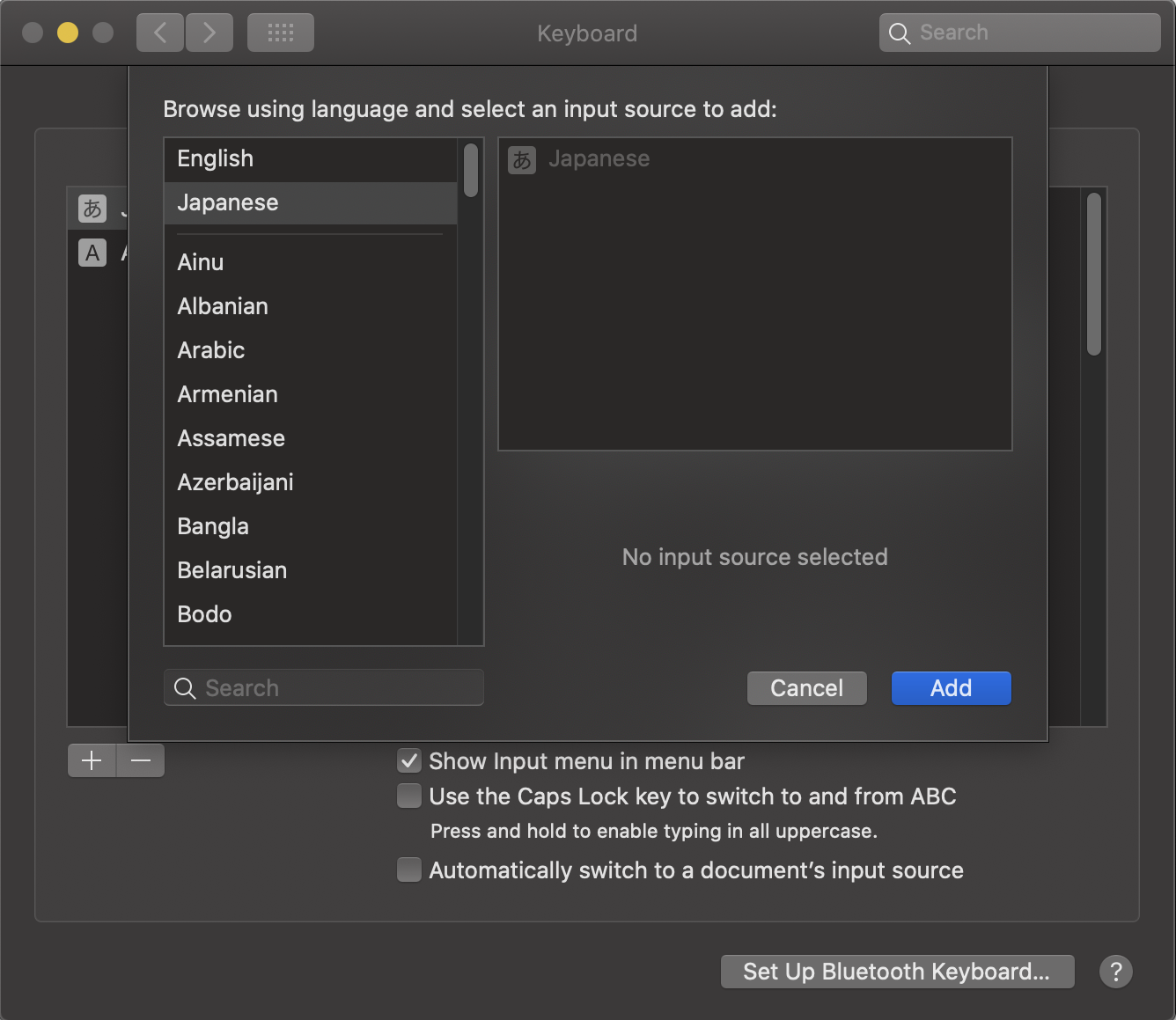
Most people would agree that Portuguese is a complicated language. Add to this the sheer number of people speaking the language around the world, and making mistakes in Portuguese is actually pretty common! Even native speakers confuse certain grammar rules or use the wrong word when trying to show off their vocabulary. As you move along in your Portuguese-learning journey, you’re bound to make some errors yourself…and that’s part of the process!
Mistakes are actually an important part of improving your language skills, and they also provide an amazing opportunity to engage with native speakers and get feedback. Besides, the entire process of understanding why something is wrong and working to address it is a valuable skill you can use in other domains of your life! So see the mistakes for what they are: a completely normal and essential part of learning Portuguese.
This article will help you understand what some of the most common mistakes are and how to correct them. From pronunciation tips to grammar rules and vocabulary mishaps, we’ll cover every mistake in Portuguese you need to know and how to fix or avoid them!
 Table of Contents
Table of Contents
- Pronunciation Mistakes
- Vocabulary Word Mistakes
- Word Order Mistakes
- Grammar Mistakes
- In the Real World
- The King of All Mistakes
- Learn More Portuguese with PortuguesePod101

Worried about Portuguese mistakes? Don’t sweat it!
1. Pronunciation Mistakes
Most sounds in Portuguese are familiar to English-speakers. That’s great news! But a few peculiar Portuguese sounds can be challenging to master, and therefore, pronunciation mistakes are quite common for foreigners. However, this kind of error in Portuguese is fairly easy to spot, so you should have no problems as you work to improve your pronunciation skills and get over these common mistakes.
1 – Nasal Sounds
Nasal sounds are all about…you guessed it, the nose. More specifically, the air released through the nose. If it sounds odd, just think about what happens when you hum: you naturally force the release of air through the nose, as you make the sound. That’s exactly what should happen when you pronounce a nasal sound, only now, your mouth should be open.
In Portuguese, you’ll encounter nasal sounds in certain situations:
- When the ~ (til) is used: Ã and Õ.
For example: maçã (“apple”), pão (“bread”), leões (“lions”)
- When a vowel is followed by an M or N.
For example: mentira (“lie”), cantar (“to sing”), atum (“tuna”)
The best way to get the hang of nasal sounds is to do a lot of listening and speaking practice.
2 – Open and Closed Vowels
A single vowel can have both open and closed sounds in Portuguese. Sometimes, the accent mark used will clearly indicate how to pronounce it, although that’s not always the case.
| Vowel | Example | Pronounce as in the word |
| A | Papa (“Pope”) | “Father” |
| E | Mel (“Honey”)Chapéu (“Hat”) | “Get” |
| Closed E | Você (“You”)Mesmo (“Same”) | “Way” |
| I | Ilha (“Island”) | “Penny“ |
| O | Porta (“Door”)Órbita (“Orbit”) | “Got” |
| Closed O | Folha (“Leaf”)Robô (“Robot”) | “Most” |
| U | Luz (“Light”) | “Flu“ |
When you see the acute accent (´), like in the word chapéu (“hat”), expect to encounter an open vowel sound. On the other hand, the circumflex accent (^), like the one in você (“you”), indicates a closed vowel sound. In this case, the vowel should be pronounced with the lips slightly more closed.
Another thing to keep in mind when you encounter accents is that they indicate which syllable should be stressed or emphasized when pronouncing it.
3 – Intonation
Intonation is particularly important in differentiating between questions and statements. In Portuguese, it’s possible to use the same sentence structure to do both things, changing only the intonation.
If your question uses any of the question words—such as quem (“who”), quando (“when”), onde (“where”), and others—it’s easier to identify a question. Of course, intonation is still an important aspect even in those cases. But it really bears weight when you don’t use question words at all.
Luckily, the intonation you have to adopt is the same as in English: raise your voice at the end of the sentence to make it sound like a question. If you’re curious to learn all the details and nuances of Brazilian Portuguese intonation and sound very scholarly next time you discuss the topic, here’s an entire academic study about it!

Master Portuguese pronunciation and feel confident!
2. Vocabulary Word Mistakes
Another type of mistake Portuguese-learners and native speakers alike make relates to vocabulary. Sometimes, we’re just excited to use a new word and don’t really understand its nuanced meaning. Let’s see how to avoid some of the most common Portuguese vocabulary mistakes.
1 – False Friends
There are many Portuguese words that might look familiar to an English-speaker, and in some cases, those similar words have the same meaning. For example, família translates to “family,” universo means “universe,” and elefante is “elephant.”
Unfortunately, not every word that looks the same actually has the same meaning. That’s exactly the case with false friends. Those tricky words appear to be the same or very similar, but their meanings are different. Here are some common examples of false friends to keep in mind.
| False friends | What you should say instead |
| Amassar = “to crush” | Acumular = “to amass” |
| Entender = “to understand” | Pretender = “to intend” |
| Pretender = “to intend” | Fingir = “to pretend” |
| Assumir = “to take over” | Presumir = “to assume” |
| Avisar = “to warn” | Aconselhar = “to advise” |
| Advertir = “to warn” | Anunciar = “to advertise” |
| Pular = “to jump” | Puxar = “to pull” |
| Puxar = “to pull” | Empurrar = “to push” |
| Suportar = “to withstand,” “to tolerate” | Apoiar = “to support” |
| Assistir = “to watch” | Ajudar = “to assist” |
| Enrolar = “to roll up” | Inscrever = “to enroll” |
| Recordar = “to remember,” “to recall” | Gravar = “to record” |
| Resumir = “to summarize” | Continuar = “to resume” |
| Noticiar = “to inform,” “to report” | Reparar, Perceber = “to notice” |
| Procurar = “to look for” | Obter, Adquirir = “to procure” |
| False friends continued | What you should say instead |
| Balcão = “counter” | Sacada = “balcony” |
| Taxa = “rate,” “fee” | Imposto = “tax” |
| Recipiente = “container” | Beneficiário = “recipient” |
| Atualmente = “currently” | Na realidade = “actually” |
| Costume = “habit” | Fantasia = “costume” |
| Educado = “polite” | Instruído = “educated” |
| Estrangeiro = “foreigner” | Estranho = “stranger” |
| Parentes = “relatives” | Pais = “parents” |
| Novela = “soap opera” | Romance = “novel” |
| Êxito = “success” | Saída = “exit” |
| Lanche = “snack” | Almoço = “lunch” |
| Legenda = “subtitles” | Lenda = “legend” |
| Injúria = “insult” | Ferimento = “injury” |
| Livraria = “bookshop” | Biblioteca = “library” |
| Esperto = “clever” | Especialista = “expert” |
2 – Similar Portuguese Words
One letter or one extra space can make all the difference in meaning. Some pairs of words are prone to causing a lot of confusion, especially when writing. Check them out:
| Mas = “but” | Mais = “more,” “plus” |
| Mal = “badly” – an adverb or noun | Mau = “bad,” “evil” – an adjective |
| Bem = “well” – antonym of mal | Bom = “good” – antonym of mau |
| Agente = “agent” | A gente = “us,” “we” |
Besides the pairs listed above, there’s a group of similar words that gets people confused:
- Por que = “why”
Por que não vamos no cinema hoje? (“Why are we not going to the movie theater today?”)
- Porque = “because”
Porque seu pai está doente. (“Because your father is sick.”)
- Por quê = “why” – at the end of the sentence or as a stand-alone sentence
Você desistiu, por quê? (“You gave up, why?”)
Por quê? (“Why?”)
- Porquê = “the reason why”
O porquê eu não sei. (“The reason why, I don’t know.”)
And as a bonus, if you want to really impress your Portuguese-speaking friends, you can explain to them the difference between these expressions that sound exactly the same:
- Acerca de = “about”
- Há cerca de = “about this long ago” (state how long right after)
- A cerca de = “the fence of” (yes, as in a physical property limit)

False friends and similar-looking words can cause a lot of confusion.
3. Word Order Mistakes
Putting words in the right order is just as important as choosing the right words!
As a quick recap, remember that Portuguese follows the Subject + Verb + Object structure. That said, let’s jump right into the most common word order mistakes.
1 – Adjectives
Most of the time, the adjective comes after the noun it refers to. For example:
- Eu gosto de vinho tinto. (“I like red wine.”)
- Ela não come comidas picantes. (“She doesn’t eat spicy food.”)
If you inverted the word order in those examples, the sentences wouldn’t make sense. However, because Portuguese is never completely straightforward, there are some exceptions!
Sometimes, the adjective can come before the noun. Below are a couple of tips to help you know where the adjective should go.
- When the adjective is adding an objective or direct attribute to the noun, place it afterwards:
Ganhei um presente grande. (“I got a big gift.”) – a large gift
- When the adjective is adding a more subjective, connotative, or even poetic attribute to the noun, it can be placed beforehand:
Ganhei um grande presente. (“I got a great gift.”)
Unfortunately, this is not a rule that works every time.
- Seu livro antigo (“Your old book”)
- Seu antigo livro (“Your old book”)
As you can see above, both sentences work and the meaning does not change. With time and practice, knowing the position of the adjective will become more natural to you. But in case you have any doubts, opt to place it after the substantive!
2 – Position of Reflexive Pronouns
When we use certain verbs in Portuguese, it’s necessary to use reflexive pronouns. Because many Portuguese reflexive verbs are not reflexive in English, this causes some confusion. Thus, the improper placement of reflexive pronouns is an error Portuguese-learners make often!
In Brazil, you’ll usually hear people placing the reflexive pronoun before the verb. However, it’s also correct to place the pronoun after the verb, and this is very common in Portugal. Compare both forms below:
- Eles se banharam. (“They bathed.”)
- Eles banharam-se. (“They bathed.”)
We suggest that you learn and use the first form, as it’s simpler and will be widely understood. So, remember that the pronoun goes immediately before the verb.
- Nós nos conhecemos na festa. (“We met each other at the party.”)
- Eu não me arrumei. (“I didn’t get ready.”)
- Eles se odiaram assim que se conheceram. (“They hated each other as soon as they met.”)

Um bolo amarelo (“A yellow cake”), not um amarelo bolo.
→ Discover more about the Top 5 Portuguese Mistakes to Avoid on PortuguesePod101.com!
4. Grammar Mistakes
Oh, grammar. Not the coolest kid on the block, we have to admit. But by understanding and avoiding these common mistakes, your Portuguese will improve by leaps and bounds!
1 – Gender Agreement
Nouns in Portuguese can be masculine or feminine, even when it doesn’t really make sense—who says a knife is female? Regardless, this is how Portuguese grammar works. Keeping this gender factor in mind, the article that comes before the noun has to agree with the gender.
As a rule of thumb, most words that end in -a are feminine, and most words that end in -o are masculine. Take a look:
Feminine words
| Masculine words
|
Of course, there are always exceptions in Portuguese. For example:
- Dia (“day”) is masculine → O dia (“the day”)
- Planeta (“planet”) is masculine → Um planeta (“a planet”)
If the words don’t end in -a or -o, it’s a matter of looking it up online and trying to remember as best as you can!
- A colher (“the spoon”)
- O mar (“the sea”)
- A cruz (“the cross”)
- O rapaz (“the guy,” “the boy”)
You might also come across words that have both genders or vary in gender depending on their meaning.
- Mascote (“mascot”) may have either gender → A mascote (feminine); o mascote (masculine)
- Rádio (“radio”) changes gender → A rádio (“the radio station,” feminine word); o rádio (device used to listen to radio stations, masculine word)
It might look a bit complicated at first, but don’t give up! With time, it will become easier and easier to master the gender of words in Portuguese.
2 – To Be or Not to Be: Ser vs. Estar
Unlike in English, in Portuguese, we have two verbs that mean “to be”: ser and estar. At first, it may be quite confusing for you, but once you get the hang of it, you’ll never make this mistake again!
Here’s the trick: Think of the difference between the two verbs in terms of permanence and impermanence.
You can be something permanently (or at least for a long time): a nationality or profession. In this case, use the verb ser.
- Eu sou médico. (“I am a doctor.”)
- Eu sou alta. (“I am tall.”)
Or you can be something for a short period of time (temporarily): you can be cold, you can be sunblind, or you can be in school. In this case, use the verb estar.
- Você está bem? (“Are you alright?”)
- Eu estou nervosa. (“I am nervous.”)
The verb estar is also commonly used as an auxiliary verb in continuous tenses, when you want to say that you “were doing” or “are doing” something.
- Eu estou saindo agora. (“I am leaving now.”)
- Você estava contando uma história. (“You were telling a story.”)
3 – Irregular Comparatives and Superlatives
When making comparisons in Portuguese, there are some rules you should follow:
- More than → mais [adjective] que
- Less than, fewer than → menos [adjective] que
However, some of the most common comparative adjectives are irregular. On the positive side, they’re not all that different from the irregular comparatives in English.
- Bigger than → maior
- Smaller than → menor
- Better than → melhor que
- Worse than → pior que
Now you know you should never say mais bom!
What about the superlatives? In some ways, handling these can be easier in Portuguese than in English. Instead of having different superlatives for each adjective, you can add one of the following expressions:
- O mais [adjective] → O mais alto (“The tallest” – male)
- A mais [adjective] → A mais alta (“The tallest”- female)
- O menos [adjective] → O menos engraçado (“The least funny” – male)
- A menos [adjective] → A menos engraçada (“The least funny” – female)
The exceptions are the same adjectives mentioned before:
- The biggest → o maior
- The smallest → o menor
- The best → o melhor
- The worst → o pior
Portuguese does have more superlatives than those listed above. However, they’re not frequently used in colloquial conversation, so for the scope of this article, we won’t discuss them.

Preciso de um sapato maior. (“I need a bigger shoe.”)
5. In the Real World
When covering common Portuguese mistakes, we also have to address some of the real-life situations you might face. Like every other language, Portuguese is constantly evolving and changing. As you travel around Brazil and meet native speakers from different parts of the country, you might notice that spoken Portuguese has many “incorrect” formations.
There’s a rich and complex discussion around this topic, with experts and researchers arguing that there’s no one right way to speak a language, and that there’s no one way that’s better than another.
Why is this important? Well, you might be puzzled when hearing some grammatically incorrect phrases from native Portuguese-speakers, and it’s important to recognize when they’re acceptable.
To highlight this point, take the case of using tu and você. Both words translate to “you” and both are second person singular pronouns. However, when using você, verbs are conjugated in the third person singular.
- Você é alto. (“You are tall.”)
- Tu és alto. (“You are tall.”)
The examples above are officially correct. But in some parts of Brazil, like the state of Rio Grande do Sul, tu is conjugated in the third person singular (like você). Although not dictionary-perfect, we can hardly say that they’re making a mistake. This is just an historical evolution in the spoken Portuguese of the region.
Depending on where in Brazil you want to go or which form (and accent) of Portuguese you prefer learning, you might end up discovering interesting variations of the spoken language.
6. The King of All Mistakes
We’ve covered all kinds of common Portuguese mistakes so far, from pronunciation to word order and grammar.
But you know what? The biggest mistake of them all is being afraid of making mistakes. Many studies have already shown that making mistakes is essential in improving one’s learning. So when the fear of making mistakes stops you from trying, experimenting, saying the wrong thing, or using the wrong word order…you’re actually robbing yourself of another learning opportunity.
Just think about it. When we make mistakes, our attention focuses on how to correct those errors. It also makes us want to understand why it was incorrect and focus our efforts on improving. On the other hand, when we’re right, there’s a sense of not having to be in our sharpest state of mind.
This is true in many different areas of our lives, but this is especially true when it comes to learning a new language. After all, we need to use different mechanisms in our brain, such as recalling things from memory and associating words and sounds with images in our mind. This requires practice—lots and lots of practice.
So if there’s one main takeaway from this article, let it be this: Go forth and make mistakes! Afterwards, try to understand those mistakes and work hard to overcome them…and then make other mistakes!
If this concept still makes you cringe a little, here are three handy tips to help you feel better and bounce back quicker when you make mistakes.
1. Welcome corrections. Whenever you get a chance to talk with other Portuguese-speakers, ask them to point out your mistakes. Since you’re asking for corrections, it will feel more comfortable.
2. Try to use the correct form after identifying a mistake, to solidify the correct form in your mind.
3. Talk openly about errors. By talking about your most common difficulties and mistakes with peers, you’ll encourage them to adopt a positive mindset about mistakes and feel better about your own.

Celebrate your mistakes! They’re an important part of your journey.
7. Learn More Portuguese with PortuguesePod101
We really hope this article helped you identify some common Portuguese mistakes you might be making. But even more importantly, we hope it has changed the way you think about making mistakes! Be proud of your errors—and the improvement that follows as you continue on your language-learning journey. Come back to this article whenever you need some encouragement or want to refresh your memory.
What did you think about the mistakes we covered today? Do you think we forgot an important aspect? Tell us in the comments!
To take your skills to the next level, continue exploring PortuguesePod101.com! There are lots of free Portuguese resources and vocabulary lists to prepare you for any situation. Go ahead and choose your favorite tools to expand your learning opportunities.
If you want to take your learning experience further, members of PortuguesePod101.com get access to the largest language lesson library in the world, with thousands of real lessons by real teachers. Perfect for anyone who wants to learn from anywhere, feel motivated, and be ready to speak Portuguese with confidence.
Happy learning!

Asking and Answering the Top 10 Questions in Portuguese

Asking interesting questions is one of the secrets to a good conversation. Regardless of the language, questions are an essential tool in your conversation toolbox. They can help you learn basic information about the person you’ve just met or dive deep into what makes them unique! Pretty cool, huh?
That’s why knowing how to ask and answer a question in Portuguese will take you a long way toward mastering the language. By practicing the sentences and patterns you’ll see in this article, you’ll begin to feel comfortable during interactions with native speakers. Simply ask interesting questions every now and again, and see how smoothly your conversation will flow.
To help you navigate the world of questions in Portuguese, we’ll introduce you to the top ten questions you can ask, alongside the translation of each word used in the sentences. You’ll also see how to answer them, broken down by the pattern so you can create your own answers. And of course, there will be plenty of examples along the way, to make sure you really grasp the concepts. Ready?
 Table of Contents
Table of Contents
- The Building Blocks
- The Top 10 Portuguese Questions and Answers to Learn
- Learn More Portuguese with PortuguesePod101

Get ready to ask and answer questions like a pro!
1. The Building Blocks
Before we see how to ask questions in Portuguese, let’s take a quick look at the building blocks to do so: the question patterns and the Portuguese question words. By learning these elements, you’ll better understand the sentences in this article, and you’ll also be able to create your own questions in the future.
1 – Portuguese Question Words
These are the most common question words in Portuguese that you can use to form direct questions.
| “What” | O que O quê (if it’s at the end of the sentence) | O que você quer comer? (“What do you want to eat?”) Você quer comer o quê? (“What do you want to eat?”) |
| “Why” | Por que Por quê (if it’s at the end of the sentence) | Por que vamos sair? (“Why are we leaving?”) Vamos sair por quê? (“Why are we leaving?”) |
| “Where” | Onde (used if the subject is not moving) Aonde (used if the subject is moving) | Onde está meu remédio? (“Where is my medicine?”) Aonde você vai? (“Where are you going?”) |
| “When” | Quando | Quando é a festa? (“When is the party?”) |
| “Who” | Quem | Quem era aquele homem? (“Who was that man?”) |
| “How” | Como | Como elas chegaram aqui? (“How did they get here?”) |
| “Which” | Qual Quais (plural) | Qual é o seu sabor de sorvete favorito? (“What is your favorite ice cream flavor?”) Quais são os seus livros? (“Which ones are your books?”) |
| “How much” / “How many” | Quanto (male singular form) Quanta (female singular form) Quantos (male plural form) Quantas (female plural form) | Quanto custa esse livro? (“How much does this book cost?”) Quanta água você tem? (“How much water do you have?”) Quantos bebês nasceram hoje? (“How many babies were born today?”) Quantas pessoas vieram? (“How many people came?”) |
| “Whose” | De quem | De quem é esse carro? (“Whose car is this?”) |
2 – Portuguese Question Patterns
There are two main patterns for asking questions in Portuguese that you need to be familiar with.
Question word + subject + verb + complement
Using this pattern, you can ask a huge variety of questions. It follows the same word order as a declarative sentence does. The difference is that you add a question word to the beginning and a question mark at the end. Most of the sample Portuguese questions we saw in the previous table feature this sentence pattern.
Examples:
- Quando vocês chegam? (“When do you arrive?”) – plural
- Onde posso deixar minha mala? (“Where can I leave my luggage?”)
In some cases, you can also see the question word at the end of the sentence, instead of at the beginning. For example:
- A festa é quando? (“The party is when?”)
Subject + verb + complement
This sentence pattern is basically a statement followed by a question mark. Intonation is an essential aspect of asking questions with this pattern, since it’s the only thing differentiating it from a declarative statement.
The intonation is fairly similar to the one used to ask questions in English. Simply raise your voice slightly at the end of the sentence.
Examples:
- Você vai sair hoje? (“Are you going out today?”)
- Podemos começar? (“May we begin?”)
Regardless of the question pattern, keep in mind that, sometimes, the subject is implicit. This happens fairly often in Portuguese, and you might see question examples in which the subject doesn’t appear. In cases like this, the subject can be inferred by looking at the verb. Take this sentence, for example:
- Vamos sair agora? (“Are we leaving now?”)
The subject in this sentence is nós (“we”), as the conjugation of the verb indicates. You can opt to include the word nós in the sentence or leave it out.

Vamos estudar? (“Let’s study?”)
2. The Top 10 Portuguese Questions and Answers to Learn
From the more basic Portuguese questions you can ask during a first meeting to questions that can take the conversation to the next level, you’ll see it all in this article. Pay attention to how the answers normally use elements from the questions—this can help you get your bearings when you’re asked a brand-new question!
1 – What’s your name?

This is probably the first question you’ll hear or ask a Portuguese-speaker. Take your time to learn this question by heart.
Question
- Qual é o seu nome?
| Qual | é | o seu | nome? |
| What (in this case, qual translates to “what,” and not “which”) | is | your | name? |
- Como você se chama?
| Como | você | se chama? |
| How | do you | call yourself? |
Answer
- Meu nome é [nome].
| Meu | nome | é | [nome]. |
| My | name | is | [name]. |
You can use this same structure to answer what your nickname or family name is.
- Meu apelido é [apelido]. (“My nickname is [nickname].”)
- Meu sobrenome é [sobrenome]. (“My family name is [family name].”)
- Eu me chamo [nome].
| Eu | me chamo | [nome]. |
| I | call myself | [name]. |
Putting it all together
- Q: Qual é o seu nome? (“What is your name?”)
- A: Meu nome é Maria. (“My name is Maria.”)
- Q: Como você se chama? (“What are you called?”)
- A: Eu me chamo Gustavo. (“I’m called Gustavo.”)
2 – Where are you from?
Here’s another great icebreaker question for getting to know people!
Question
- De onde você é?
| De | onde | você | é? |
| From | where | you | are? |
- De onde você vem?
| De | onde | você | vem? |
| From | where | you | come? |
Answer
- Eu sou de [local].
| Eu | sou | de | [local]. |
| I | am | from | [place]. |
- Eu venho de [local].
| Eu | venho | de | [local]. |
| I | come | from | [place]. |
Note that, in both cases, the preposition de (“of” / “from”) should agree with the following word in gender and number. Check it out:
- Eu sou de Portugal. (“I am from Portugal.”)
- Eu venho da África do Sul. (“I come from South Africa.”)
- Eu sou dos Estados Unidos. (“I am from the United States.”)
You can also answer the question by stating your nationality:
- Eu sou brasileiro. (“I am Brazilian.”)
Putting it all together
- Q: De onde você é? (“Where are you from?”)
- A: Eu sou do Rio de Janeiro. (“I’m from Rio de Janeiro.”)
- Q: De onde você vem? (“Where do you come from?”)
- A: Eu venho da Índia. (“I come from India.”)
3 – Do you speak Portuguese?
People in Brazil will likely be very curious to know more about your Portuguese-learning experience. Expect to hear some questions about it!
Question
- Você fala [idioma]?
| Você | fala | [idioma]? |
| You | speak | Portuguese? |
You can also add more details to your question at the end of the sentence. For example:
- Você fala inglês fluentemente? (“Do you speak English fluently?”)
- Você fala francês há muito tempo? (“Have you spoken French long?”)
Answer
- Eu falo [idioma].
| Eu | falo | [idioma]. |
| I | speak | Portuguese. |
You can begin the sentence with sim (“yes”) or não (“no”), and then complete your answer with the pattern above.
- Sim, eu falo Português. (“Yes, I speak Portuguese.”)
- Não, eu não falo Espanhol. (“No, I don’t speak Spanish.”)
And, just like before, you can add more details to your answer using adverbs and adjectives.
- Eu falo um pouco de Português. (“I speak a bit of Portuguese.”)
- Eu falo Espanhol muito bem. (“I speak Spanish very well.”)
Putting it all together
- Q: Você fala Italiano? (“Do you speak Italian?”)
- A: Sim, eu falo Italiano. (“Yes, I speak Italian.”)
- Q: Ela fala português? (“Does she speak Portuguese?”)
- A: Não, ela não fala português. (“No, she doesn’t speak Portuguese.”)

Você fala todas essas línguas? (“Do you speak all of those languages?”)
4 – How long have you been studying Portuguese?
After successfully explaining what languages you speak, it’s time to show off your skills. After all, it takes a while to master a new language, and you deserve to brag a little!
Question
- Você estuda [idioma] há quanto tempo?
| Você | estuda | [idioma] | há | quanto tempo? |
| You | study | Portuguese | have been | how long? |
The translation you see above might confuse you a bit, so let’s unpack it. When we use the verb haver (“to have”) with another verb in the present tense (like estuda), it describes an action that started in the past and continues in the present.
The verb haver can be substituted by the verb fazer (“to make”), which in this case, will have the same meaning as haver:
- Você estuda [idioma] faz quanto tempo?
It’s also common to see this question pattern inverted:
- Há quanto tempo que você estuda [idioma]?
- Faz quanto tempo que você estuda [idioma]?
Answer
You can answer this Portuguese question in a more complete way by repeating part of the question, or in a more direct way, just using the verb and the amount of time.
- Eu estudo [idioma] faz / há [tempo].
| Eu | estudo | [idioma] | faz / há | [tempo]. |
| I | study | Portuguese | for | [time]. |
- Faz / há [tempo].
| Faz / há | [tempo]. |
| For | [time]. |
Note that, regardless of the number of years or months you answer with, the verb is always in the singular form. That happens because, when referring to actions that started in the past and continue in the present, the verb doesn’t vary in number.
- Faz um ano. (“For one year.”)
- Eu estudo inglês faz dez anos. (“I have been studying English for ten years.”)
- Eu estudo japonês há um ano. (“I have been studying Japanese for one year.”)
- Há dez anos. (“For ten years.”)
Putting it all together
- Q: Você estuda coreano faz quanto tempo? (“How long have you been studying Korean?”)
- A: Faz três anos. (“For three years.”)
- Q: Você estuda português faz quanto tempo? (“How long have you been studying Portuguese?”)
- A: Eu estudo português há dois meses. (“I have been studying Portuguese for two months.”)

5 – Have you been to [place]?
Traveling is always an interesting topic for conversation, and some of the most common Portuguese questions for foreigners are related to this topic.
Question
- Você já foi para [lugar]?
| Você | já | foi | para | [lugar]? |
| You | already | have been | to | [place]? |
After the preposition para (“to”), it might be necessary to add articles that agree with the gender and number of the place.
- Você já foi para São Paulo? (“Have you been to São Paulo?”)
- Você já foi para o Rio de Janeiro? (“Have you been to Rio de Janeiro?”)
- Você já foi para a China? (“Have you been to China?”)
- Você já foi para os Países Baixos? (“Have you been to the Netherlands?”)
Answer
This question can be answered with a simple sim (“yes”) or não (“no”). However, to really make it count, you can add information about how many times you’ve been or when you went there. You can add this information at the end of the sentence.
| Sim / Não, | eu | (não) fui | [complemento]. |
| Yes / No, | I | have (not) been | [complement]. |
- Sim, eu fui uma vez. (“Yes, I’ve been once.”)
- Não, eu nunca fui. (“No, I’ve never been.”)
- Sim, eu fui lá ano passado. (“Yes, I went there last year.”)
Putting it all together
- Q: Você já foi para Roma? (“Have you already been to Rome?”)
- A: Sim, eu fui para Roma várias vezes. (“Yes, I’ve been to Rome several times.”)
- Q: Ele já foi para o nordeste? (“Has he already been to the northeast [of Brazil]?”)
- A: Não, ele não foi. (“No, he has not.”)
→ Explore more travel-related vocabulary and essential phrases with PortuguesePod101!

Você já foi para Paris? Sim, já fui! (“Have you been to Paris? Yes, I’ve been!”)
6 – Do you like [country’s] food?
You can’t talk about traveling without bringing up all of the delicious local cuisine! And you can bet that Brazilians will ask you about your thoughts on Brazilian food.
Question
- Você gosta da comida de [país]?
| Você | gosta da | comida | de | [país]? |
| Do you | like | food | of | Brazil? |
Once again, the preposition de (“of”) has to agree with the country or place.
- Você gosta da comida do Brasil? (“Do you like Brazil’s food?”)
- Você gosta da comida da França? (“Do you like France’s food?”)
Instead of using “de + country,” you can also use the adjective that refers to that country. For example:
- Você gosta da comida brasileira? (“Do you like Brazilian food?”)
- Você gosta da comida francesa? (“Do you like French food?”)
If you want to make the question more specific, you can add adjectives after the word comida (“food”):
- Ela gosta da comida tradicional japonesa? (“Do you like traditional Japanese food?”)
- Você gosta da comida vegetariana da Índia? (“Do you like vegetarian Indian food?”)
Answer
The answer pattern here is very similar to the one we saw for the previous question. You can start with sim (“yes”) or não (“no”), and then add more information to make your answer complete.
| Sim / Não, | eu | (não) gosto | [complemento]. |
| Yes / No, | I | (don’t) like | [complement]. |
- Sim, eu gosto. (“Yes, I like it.”)
- Sim, eu gosto da comida peruana. (“Yes, I like Peruvian food.”)
- Não, eu não gosto muito. (“No, I don’t like it very much.”)
- Não, eu não gosto da comida daqui. (“No, I don’t like the food from here.”)
To emphasize how much you like (or don’t like) the local food, you can use stronger verbs than gostar (“to like”).
- Sim, eu adoro. (“Yes, I adore it.”)
- Sim, eu amo a comida da Colômbia. (“Yes, I love Colombian food.”)
- Não, eu odeio a comida alemã. (“No, I hate German food.”)
Putting it all together
- Q: Você gosta da comida da Tailândia? (“Do you like Thailand’s food?”)
- A: Sim, eu gosto da comida tailandesa. (“Yes, I like Thai food.”)
- Q: Você gosta da comida do Chile? (“Do you like Chile’s food?”)
- A: Não, eu odeio. (“No, I hate it.”)
7 – How is ___?
This is a versatile question pattern for you to learn. Let’s say you just made a delicious batch of cookies and offered some to your brand-new acquaintances. Now, you want to know what they think about them. What do you say?
Another scenario: You’re going to visit a friend in another city, but before packing, you want to know what the weather is like there. How can you ask?
In both cases, the question is about how something is at the moment. For this reason, you should use the temporary form of the verb “to be” in Portuguese: estar.
- Como está o / a [complemento]?
| Como | está | o / a | [complemento]? |
| How | is | the | [complement]? |
Use this question pattern to ask how a singular thing or event is. The articles will change depending on the gender of the thing or event. Take a look at the examples:
- Como está o bolo? (“How is the cake?”)
- Como está a comida? (“How is the food?”)
- Como está o clima aí? (“How is the weather there?”)
- Como está a festa? (“How is the party?”)
- Como estão os / as [complemento]?
| Como | estão | os / as | [complemento]? |
| How | are | the | [complement]? |
Use this second pattern to talk about plural things or events. Once again, make sure the article agrees with the thing or event.
- Como estão os biscoitos? (“How are the cookies?”)
- Como estão as férias? (“How is the vacation?”)
But what about asking a question about the essence or a permanent characteristic of something? In this case, you should use the permanent “to be” verb, which is ser.
- Como é o/a [complemento]?
| Como | é | o / a | [complemento]? |
| How | is | the | [complement]? |
- Como é a casa nova? (“How is the new house?”)
- Como é a sua vizinha/ o seu vizinho? (“How is your neighbor?”)
- Como é o gato? (“How is the cat?”)
- Como são os/as [complemento]?
| Como | são | os / as | [complemento]? |
| How | are | the | [complement]? |
- Como são as pessoas da cidade? (“How are the people of the city?”)
- Como são os móveis novos? (“How is the new furniture?”)
If you need to refresh your memory, check the conjugation for the verbs ser and estar.
Answer
It’s fairly simple to answer these types of questions. Use the same verb that was used in the question (paying attention to the conjugation), and add the adjectives and/or adverbs you want. To make it more complete, you could also add the subject before the verb.
| Sujeito | verbo | complemento. |
| Subject | verb | complement. |
- Está boa. (“It’s good.”)
- A comida está boa. (“The food is good.”)
- Estão gostosos. (“They’re tasty.”)
- Os biscoitos estão gostosos. (“The cookies are tasty.”)
- É fofo. (“It’s cute.”)
- O gato é fofo. (“The cat is cute.”)
- São simpáticas. (“They’re friendly.”)
- As pessoas são simpáticas. (“The people are friendly.”)
Putting it all together
- Q: Como está o namoro? (“How is the relationship?”)
- A: Está muito bem, obrigado! (“It is very well, thank you!”)
- Q: Como são os novos colegas? (“How are the new colleagues?”)
- A: São muito simpáticos. (“They’re very friendly.”)
- Q: Como está a sopa? (“How is the soup?”)
- A: A sopa está muito salgada. (“The soup is very salty.”)

Como está o sorvete? (“How is the ice cream?”)
8 – What are you doing?
Here’s another versatile Portuguese question that, with just a few tweaks, can be used in a variety of situations.
Question
- O que você está fazendo?
| O que | você | está | fazendo? |
| What | you | are | doing? |
By adding more information at the end of the sentence, you can ask more-specific questions.
- O que você está fazendo agora? (“What are you doing now?”)
- O que você está fazendo hoje? (“What are you doing today?”)
- O que você está fazendo sozinho aqui? (“What are you doing alone here?”)
- O que você está fazendo na sala? (“What are you doing in the living room?”)
In Portuguese, you can use this exact pattern to ask what someone is making in the kitchen:
- O que você está fazendo para o almoço? (“What are you making for lunch?”)
- O que você está fazendo no forno? (“What are you making in the oven?”)
You don’t need to be stuck with the verb fazer (“to do” / “to make”). By using other verbs in the gerund form, you open up many more possibilities:
- O que você está assistindo? (“What are you watching?”)
- O que você está cortando? (“What are you cutting?”)
- O que você está ouvindo? (“What are you listening to?”)
- O que você está assando? (“What are you baking?”)
Answer
To answer, you’ll need to describe the action you’re doing in the gerund form.
| Eu | estou | [verbo no gerúndio] | [complemento]. |
| I | am | [verb in gerund form] | [complement]. |
- Eu estou lendo um livro. (“I am reading a book.”)
- Eu estou limpando o quarto. (“I am cleaning the room.”)
- Eu estou assando um bolo. (“I am baking a cake.”)
- Eu estou tomando banho. (“I am taking a shower.”)
- Eu estou correndo. (“I am running.”)
Putting it all together
- Q: O que você está fazendo? (“What are you doing?”)
- A: Estou arrumando a garagem. (“I am organizing the garage.”)
- Q: O que você está fazendo no quarto? (“What are you doing in the bedroom?”)
- A: Estou estudando. (“I am studying.”)
- Q: O que vocês estão fazendo? (“What are you doing?”) – plural
- A: Estamos assistindo um filme. (“We are watching a movie.”)

Estamos assistindo futebol. (“We are watching soccer.”)
9 – Are you all right?
This is certainly an essential question in our daily interactions with friends, colleagues, loved ones, and relatives!
- Você está bem?
| Você | está | bem? |
| You | are | alright? |
If you want to ask this question about somebody else, it’s easy: simply use the name or the pronoun instead of você (“you”).
- Ela está bem? (“Is she alright?”)
- Luís está bem? (“Is Luís alright?”)
You may also hear a simple: Tudo bem? (“Alright?”). It means the same thing!
Alternatively, there’s another question you can ask to discover how a person is. The pattern might look familiar to you.
- Como você está?
| Como | você | está? |
| How | you | are? |
Once again, you can ask the same question using other subjects:
- Como ele está? (“How is he?”)
Answer
| Eu | estou | [complemento]. |
| I | am | [complement]. |
It’s common to see these sentences without the subject, as well.
- Estou bem. (“I’m alright.”)
- Eu estou muito bem. (“I am very well.”)
- Ela está bem. (“She is alright.”)
- Eu estou triste. (“I am sad.”)
- Eu estou meio doente. (“I’m a bit sick.”)
If the question was Você está bem? (“Are you alright?”), you can also add sim (“yes”) or não (“no”) before the rest of the sentence.
- Sim, estou bem. (“Yes, I am well.”)
- Não, eu estou mal. (“No, I’m not well.”)
Putting it all together
- Q: Você está bem? (“Are you alright?”)
- A: Sim, eu estou muito bem! (“Yes, I am very well!”)
- Q: Tudo bem? (“Alright?”)
- A: Não, não estou muito bem. (“No, I’m not very well.”)
- Q: Como você está? (“How are you?”)
- A: Estou preocupada. (“I’m worried.”)
10 – How much is it?
When shopping, eating out, or hiring a service, this is a must-ask question.
Question
- Quanto custa?
| Quanto | custa? |
| How much | does it cost? |
- Quanto é?
| Quanto | é? |
| How much | is it? |
These are very simple Portuguese questions for asking how much something costs. If you’re holding an item and showing it as you ask, it’s clear enough what you’re referring to. But if you need to make it more specific, add the name of the product or service at the end of the sentence.
- Quanto custa esse livro? (“How much does this book cost?”)
- Quanto é a massagem? (“How much is the massage?”)
- Quanto custa a fatia de bolo? (“How much does the slice of cake cost?”)
- Quanto é esse anel? (“How much is this ring?”)
Answer
To answer, you can simply state the value, or start the sentence with one of the verbs used in the question:
| Custa / é | [valor]. |
| It costs / it is | [value]. |
Remember that, in Brazil, the currency is the Real (R$). So when you’re talking about monetary values, you have to use the word reais and centavos (“cents”).
- Custa cinco reais e cinquenta centavos. (“It costs R$5,50.”)
- É vinte reais. (“It’s R$20,00.”)
- Custa um real. (“It costs R$1,00.”)
Putting it all together
- Q: Quanto custa o quadro? (“How much does the painting cost?”)
- A: Custa 150 reais. (“It costs R$150,00.”)
- Q: Quanto é a mensalidade da academia? (“How much is the gym monthly fee?”)
- A: É 80 reais. (“It’s R$80,00.”)

Quanto custa esse iogurte? (“How much is this yogurt?”)
→ Want to practice your pronunciation? Listen to the Top 25 Portuguese Questions on PortuguesePod101!
3. Learn More Portuguese with PortuguesePod101
This was a long lesson, but hopefully it gave you everything you need to know about asking Portuguese questions. Before you know it, you’ll be spouting them left and right! So take your chances and satisfy your curiosity by putting these questions into practice. Remember, they can be of great help when you’re feeling stuck in a conversation.
Did you like the way the questions and answers were presented? Did we leave out any questions you were hoping to see? Tell us what you think in the comments below! And feel free to come back to this article whenever you feel like it.
Now is the time to continue on your language-learning journey! There are more free Portuguese resources and a variety of vocabulary lists available on PortuguesePod101.com. Go ahead and choose your favorite tools to expand your learning opportunities.
If you want to take your learning experience further, members of PortuguesePod101.com get access to the largest language lesson library in the world, with thousands of real lessons by real teachers. Perfect for anyone who wants to learn from anywhere, feel motivated, and be ready to speak Portuguese with confidence.

Ace the Celpe-Bras Brazilian Portuguese Proficiency Test!

Have you ever heard about Celpe-Bras? The name isn’t very clear, I know. But if you’re serious about your Portuguese learning, it’s good to be familiar with it! After all, Celpe-Bras is the official Brazilian Portuguese proficiency test, and the one exam you need to take if you have plans to study or work in Brazil.
Don’t be scared by words like “test” and “exam,” though! We’ll walk you through everything you need to know about this Portuguese test for foreigners, answering the most important questions. In this article, we’ll take a look at how the test is organized, how it measures one’s proficiency in Portuguese, how to register, and how to best prepare for it.
Even if you’ve never heard about Celpe-Bras before today, you’ll know everything about it by the end of this article. If you’ve already decided you’re going to take the exam, this article will be helpful for your preparation so you can achieve the results you want. Sound good? Let’s dive right in!
 Table of Contents
Table of Contents
- What You Need to Know About Celpe-Bras
- What’s in the Celpe-Bras Exam?
- After the Test
- Tips on Preparing for Celpe-Bras
- Learn More Portuguese with PortuguesePod101
1. What You Need to Know About Celpe-Bras
Celpe-Bras stands for Certificado de Proficiência em Língua Portuguesa para Estrangeiros (“Certificate of Portuguese Language Proficiency for Foreigners”). It’s the official certificate of proficiency in Brazilian Portuguese as a second language, and the only one recognized and issued by the Brazilian Ministry of Education. It’s also recognized internationally!
Officially, the Celpe-Bras certification is valid for life, although different institutions might specify how long ago the test should have been taken.
The four levels of proficiency indicated by the test are:
- Intermediate
- Upper-intermediate
- Advanced
- Highly advanced
There isn’t a different test for each level, which means that every candidate takes the same test and their Celpe-Bras results indicate their proficiency level.
Celpe-Bras is divided into two parts: a written section and an oral section. In total, the test takes 3 hours and 20 minutes to complete. During the exam, your reading, writing, listening, and speaking skills will be evaluated. We’ll take an in-depth look at how exactly each section is organized later on.
A- Why Take the Test?
You might be wondering why taking the Portuguese proficiency test is important. Well, if you’re considering any of the following scenarios, the test might be for you:
- Planning to enroll in a Brazilian university
- Looking for a job in Brazil
- Need to register in professional bodies, like the Medical Board
- Need to otherwise prove your ability to communicate in Portuguese
Taking the test is an investment of time and money, so make sure it’s the right option for you, depending on your situation. If you’re only looking to find out your proficiency level, but don’t need to prove it to any institution, consider taking the Assessment Test by signing up for PortuguesePod101.com’s Premium PLUS program.

Want to study in Brazil? Then you need to take the Celpe-Bras test!
B- Celpe-Bras Registration
Celpe-Bras takes place two times every year: once in the first semester and another time in the second semester. There are currently more than 120 places in Brazil and abroad with permission to administer the test. When you’re ready to register, you can search for Celpe-Bras test centers on this page (in Portuguese).
Registration is done online, through the official website. Candidates need to create an account by giving their telephone number and email address. After that, they need to fill in all of the necessary information, as well as details about when and where the test will be taken.
They also ask some personal questions, which will be used in the oral section of the test. Finally, candidates have to upload a document to register successfully. After receiving a confirmation, all that’s left is to pay the registration fee.
Each place can charge its own fee, but there is a maximum value defined by the Brazilian Ministry of Education. The maximum fee for exams taken in Brazil is R$200 and for exams taken abroad it’s US$100.
After they get the payment confirmation, candidates receive a proof of registration, which should be kept in a safe place. Candidates need to present this document on the day of the exam and, later on, will need it to retrieve the test results. On the day of the test, candidates should also take a valid ID document with a picture.
C- Assessment and Score
Basically, what Celpe-Bras wants to evaluate is your capacity for understanding and adapting context, your vocabulary, and your logic in constructing sentences.
To get the certification, a candidate has to score at the intermediate level (or higher). The oral section and the written section are graded separately. If each section has a different mark, your final grade will be equal to the lowest score.
Your score will determine your proficiency level as follows:
| Level | Grade | Description |
| No certification | 0,00 to 1,99 | |
| Intermediate | 2,00 to 2,75 | Capable of comprehending, as well as producing, spoken and written text about limited themes, in known contexts and everyday situations. Mistakes are not severe enough to compromise communication. |
| Upper-intermediate | 2,76 to 3,50 | Same as the previous level, but mistakes in pronunciation and written text are less frequent. |
| Advanced | 3,51 to 4,25 | Capable of comprehending, as well as producing, spoken and written text in a fluent manner, about various themes in both known and unknown contexts. Some mistakes might be made when talking about unknown contexts, but not enough to compromise communication. |
| Highly advanced | 4,26 to 5,00 | Same as the previous level, but mistakes in pronunciation and written text are less frequent. |
You can find more information about Celpe-Bras on the official website, in Portuguese.
2. What’s in the Celpe-Bras Exam?
Now that you know all the details about registering and grading, it’s time to learn what you’ll face when taking the Portuguese proficiency exam!
A- Written Section
This section has 4 tasks, and you might take up to 3 hours to complete it.
| Task | Content | Abilities tested | Time |
| 1 | Video | Oral comprehension and writing abilities | 30 minutes |
| 2 | Audio | Oral comprehension and writing abilities | |
| 3 | Written text | Reading and writing abilities | 2 hours and 30 minutes |
| 4 | Written text | Reading and writing abilities |
Celpe-Bras is not a multiple-choice test, which means that you’ll have to answer the questions in essay form. The questions might ask you to give your personal opinion about the topics discussed, or to back up your answer with information taken directly from the content presented to you.
Remember that their objective in this section is to test two things: how well you can make sense of the information given to you, and how well you can explain your point of view in writing.
A few tips to keep in mind:
- Before this section begins, you’ll be given some time to ask questions. Be sure to ask about anything that’s unclear to you at that point.
- The audio and video components will be repeated, so don’t panic if it’s not crystal-clear at first. Take a deep breath and pay attention the second time it comes around!
- Read the written text first. Then, after reading the prompt questions, go back to the text and underline whatever information you think is relevant. Taking notes at this point is also a good idea.
- Take a few minutes to structure your answer. Think about what your main points will be before starting to write.
- After you’re done, don’t be in a hurry to hand it in! Re-read all of your answers and make any necessary corrections.

Start practicing now: write your next journal entry in Portuguese.
B- Oral Section
The oral section takes 20 minutes, and during this time, the candidate will have a conversation with the evaluator. Another evaluator is also present, taking notes, and will not participate in the conversation. The objective of this section is to test your oral comprehension and speaking abilities.
The first 5 minutes of this section will focus on the candidate’s personal information. Remember when we said you would have to complete some personal information when registering? They’ll use that to begin the conversation. That’s why it’s a good idea to give as much detail as possible when filling out the registration form.
After that, the following 15 minutes will focus on three topics to be discussed between you and the evaluator. He or she will use different visual props, like magazine covers, photos, and other images or messages. The evaluator will ask questions about how they make you feel, your opinion, or what the images are trying to communicate. They might also ask about a specific word used in it and its meaning.
Some tips to help you ace the oral section of Celpe-Bras:
- Take a screenshot of the information you fill in when registering and print it out. This way, you can read it while preparing for the exam. This will give you an idea of the first questions they’ll ask you.
- Remember that the evaluators are not there to make you fail! Most of the time, they’ll try to make you feel at ease, so the evaluation can flow more like a conversation.
- Take your time to really listen to what’s being asked. Avoid being in your head all the time, thinking on how to answer even before they’re done asking.
- Avoid using excess slang or colloquial language.

The oral section is like a conversation.
3. After the Test
Congratulations! After all the preparation and taking the test itself, all that’s left is the waiting part. It takes around two months for the results to become available. Results will be published online, and after that, you can ask for the certificate. Remember that you’ll need the proof of registration to do that, so keep it in a safe place!
It’s not possible to ask for a revision of the score. But you should know that the grading process takes the input of two separate evaluators, in both the written and oral sections. In case the grades are very different, a third evaluator is called in to assess it.
4. Tips on Preparing for Celpe-Bras
Now that you know how to successfully register for and take this Brazilian Portuguese proficiency test, it’s time to get down to business—in this case, to your studies. After all, preparation is the word of order when it comes to proficiency tests.
Here are our top tips for your Celpe-Bras preparation and to help you achieve the results you want!
A- Reading
- Keep up with Brazilian Portuguese news. There are several channels and websites available. From a sports-only website to the most popular national newspaper, you can read about anything that interests you.
- Read opinion articles and movie reviews from quality sources.
- Reading blogs, magazines, and books will introduce you to different writing styles and expand your vocabulary.
- Beware of using social media to prepare: normally, the language used in everyday comments and posts is not 100% correct.
B- Listening
- Try to listen to Portuguese every day. Even if you don’t have much time, don’t go one day without Portuguese listening practice. PortuguesePod101 has a huge lesson library with many listening exercises you can use!
- Watch TV shows or news to get used to normal conversation speed.
C- Speaking
- Try to express your feelings and opinions out loud. Talk to Portuguese-speakers, asking and answering questions about different topics.
- Record yourself and listen to your recording afterwards to catch where you can improve. This will also help you feel more comfortable with speaking Portuguese overall.
D- Writing
- Start writing in Portuguese every day. You can write a journal entry, your to-do list, a message to a Portuguese-speaking friend…whatever it takes to get comfortable with it!
- Ask native speakers to read your writing and give you feedback. If you don’t know anyone you could ask in person, reach out online.
In addition, you should definitely reserve some time to take the past editions of Celpe-Bras at home. Take them as if they were the real deal, in a quiet place and timing yourself.
You can also benefit from one-on-one tutoring through MyTeacher, an exclusive service by PortuguesePod101. You can get detailed reviews on your written answers, and improve your pronunciation and listening skills.

5. Learn More Portuguese with PortuguesePod101
Whether you were familiar with Celpe-Bras or had never heard about it before, we hope this guide gave you the information you need! When it comes time for you to get your Portuguese proficiency certification, you’ll be prepared to do amazingly well.
Do you think we forgot to cover something about Celpe-Bras? Or maybe you took the exam before and want to share your experience? Let us know in the comments!
Don’t forget to look for the past Celpe-Bras tests and practice with the real thing. Now is the perfect time to take your Portuguese studies up a notch. To help you along the way, there are lots of free Portuguese resources and a variety of vocabulary lists available on PortuguesePod101.com. Go ahead and choose your favorite tools to expand your learning opportunities.
If you want to take your learning experience further, members of PortuguesePod101.com get access to the largest language lesson library in the world, with thousands of real lessons by real teachers. Perfect for anyone who wants to learn from anywhere, feel motivated, and be ready to speak Portuguese with confidence. Having a membership with us is especially useful if you’re planning to take a Portuguese proficiency test, as you can get quality feedback and training.
Good luck, and happy Portuguese learning!
Top 10 Portuguese Sentence Patterns You Will Actually Use

Learning a language is a never-ending journey. Even our own mother tongue can be surprising at times! But let’s be honest: the language we use in the majority of our daily interactions tends to repeat itself. That’s why one of the smartest things to do when learning a new language is to cut to the chase and pick up the most common sentences.
No need to waste lots of time with grammar rules or perfecting each little sound. Instead, practice these common Portuguese sentence patterns and boost your communication skills! Once you have them down, each of your interactions with a native speaker or a fellow language-learner will fill you with more confidence and expand your vocabulary. All it takes to begin is getting comfortable with these straight-to-the-point sentence patterns in Portuguese.
In this comprehensive guide, we’ll cover some easy Portuguese sentence patterns, as well as more complex and detailed ones; these will give you the flexibility to build your own Portuguese phrases. The examples we provide will help you understand the context in which each one is used. Practice these sentence patterns until they become second-nature to you. We guarantee that it will give you a big advantage in your language-learning journey as you continue improving!
 Table of Contents
Table of Contents
- A is B
- The Current Moment
- I Want
- I Need
- I Like and I Love
- Asking Someone for Something: Please
- Asking for Permission
- Asking for Information
- Asking About the Time
- Asking About Location
- Learn More Portuguese with PortuguesePod101
1. A is B

This Portuguese sentence pattern is extremely versatile! Whether you want to link two nouns or a noun and an adjective, this is the structure you’ll use. This makes it handy for talking about, or describing, people and objects.
The foundation for this type of sentence in Portuguese is the verb ser (“to be”). If you need a quick refresher, check the conjugation of the verb.
- Eu sou alta. (“I am tall.”) [female]
- João é simpático. (“João is nice.”)
- Marta é minha esposa. (“Marta is my wife.”)
- O médico é muito experiente. (“The doctor is very experienced.”)
- Minha mãe era professora. (“My mother was a teacher.”)
- O churrasco é amanhã. (“The barbecue is tomorrow.”)
- Esta universidade era a melhor do país. (“This university was the best in the country.”)
As you can see, by using the different conjugations of the verb ser, you can add information about the subject. Following the verb, you can use a noun, an adjective, or an adverb.
- → Enrich your sentences using the best adjectives! Check out our list of the Top 25 Portuguese Adjectives on PortuguesePod101.com.
2. The Current Moment
While in English, we use the verb “to be” to talk about both permanent and temporary characteristics, in Portuguese, there’s a difference. In the previous Portuguese sentence pattern, we already saw the verb ser being used. Now, let’s see the sentence structure used to talk about things in the current moment.
For this, let’s invite the verb estar (“to be,” impermanent). Estar is another one of those useful little verbs that appear all the time. It might be used to talk about something we are temporarily:
- Eu estou confusa. (“I am confused.”)
- Meu filho está com fome. (“My son is hungry.”)
- O dia está nublado. (“The day is cloudy.”)
- Nós estamos muito atrasados. (“We are very late.”)
- O jantar estava uma delícia! (“The dinner was delicious!”)
- Nós estamos no shopping. (“We are at the mall.”)
But it doesn’t stop there. The verb estar is also used to talk about things we are doing or the weather.
- Nós estamos limpando a casa. (“We are cleaning the house.”)
- Estou chegando. (“I’m arriving.”)
- Está chovendo. (“It’s raining.”)
- Você estará em casa amanhã? (“Will you be home tomorrow?”)
- Ele estava correndo quando você ligou. (“He was running when you called.”)
When talking about actions that are happening in this moment, or that were happening in the moment you’re referring to, the gerund form is commonly used.

Está nublado. (“It’s cloudy.”)
3. I Want
Let’s say you’re walking around a famous city in Brazil, under the hot sun, and you see a juice stand with mouthwatering fruit juices. You want to get one ASAP! How can you let them know you want an ice-cold glass of juice?
The verb querer (“to want”) is used to express something you want. If you need to, you can check the conjugation of the verb querer.
- Eu quero um suco de laranja gelado, por favor. (“I want a cold orange juice, please.”)
- Eu quero comprar um (par de) sapato(s). (“I want to buy a pair of shoes.”)
- Você quer ir no show? (“Do you want to go to the concert?”)
- Meu pai quer ir no jogo de futebol. (“My dad wants to go to the soccer match.”)
There are also a couple of ways to express something similar: “I would like.” For that, use the verb gostar (“to like”) in the subjunctive mode.
- Eu gostaria de um copo de água. (“I would like a glass of water.”)
- Ela gostaria de te ver. (“I would like to see you.”)
- Você gostaria de vir? (“Would you like to come?”)
That’s great, but what if you have to make sure the people at the juice stand don’t put sugar in your juice? For situations like this, you need to learn how to say you don’t want something. It’s very easy: simply put the word não (“no”) before your verb.
- Eu não quero açúcar. (“I don’t want sugar.”)
- Meu pai não quer ir ao jogo de futebol. (“My dad doesn’t want to go to the soccer match.”)
4. I Need
When things go up a notch, you might prefer making it clear that you need something! For this, you’ll use the verb precisar (“to need”). Regardless of what your needs are—food, drinks, shade on a hot day, a friend to go to the beach with—this verb has got you covered!
Notice that, when the verb precisar is followed by another verb, you don’t need any preposition in between them. Also, the verb that follows precisar is used in the infinitive form. For example:
- Eu preciso dormir. (“I need to sleep.”)
- Precisamos conversar. (“We need to talk.”) – the pronoun “we” is implicit in the sentence
- Eu preciso voltar para a academia. (“I need to go back to the gym.”)
Now, you can also use the verb precisar with a nominal phrase, or in other words, a phrase without a verb. In these cases, you’ll need the preposition de (“of”). Here are a few examples of this Portuguese sentence construction:
- Você precisa de algo? (“Do you need something?”)
- Ela precisou de remédio. (“She needed medicine.”)
- Vocês vão precisar de um carro. (“You will need a car.”)

Preciso de um abraço! (“I need a hug!”)
5. I Like and I Love
There are a couple of different ways to express the things you like, adore, and love in Portuguese. Some people would argue that there should be more words to cover the entire spectrum of love we feel, but for now, there are only three Portuguese sentence patterns you need to learn!
The first is the sentence using gostar (“to like”):
- Eu gosto de você. (“I like you.”)
- Ela gostava de fazer compras. (“She liked shopping.”)
- Nós gostamos de gatos. (“We like cats.”)
- Gosto muito de dançar. (“I like to dance very much.”)
- Vocês gostam muito dessa cidade! (“You like this city a lot!”)
Two things to notice:
1) The verb gostar is followed by a preposition. In most cases, the preposition is de (“of”).
2) As you can see in the last two examples, you can add the adverb muito (“very” or “a lot”) after the verb to amplify the intensity! This way, you can say that you like something a lot.
Now, if you really like something, you might use the verb adorar (“to adore”). It’s commonly perceived as being a bit more intense than gostar. Although the literal translation is “to adore,” unless you’re talking about a religious setting, it’s more correct to translate it to “like very much” or even “love.”
- Ela adora comida italiana! (“She loves Italian food!”)
- Nós adoramos a sua casa. (“We like your house very much.”)
- Eu adoraria ir à festa. (“I would love to go to the party.”)
- Eles adoram cozinhar. (“They love to cook.”)
Lastly, to express love or fondness for just about anything, use the verb amar (“to love”). But know that Brazilians are intense, and the verb amar is used very often. Saw a movie you liked? You can say you loved it. Your friend sent you a relatable meme? You can reply with amei (“loved it”)! Want to tell your best friend you love them? Yep, you would use the same verb.
- Amo muito meus pais. (“I love my parents a lot.”)
- Minha mãe ama meus amigos. (“My mother loves my friends.”)
- Eles amavam comida mexicana. (“They loved Mexican food.”)
- Eu te amo. (“I love you.”)
The last example is an interesting case: although in Brazil, the pronoun você (“you”) is most commonly used in speech, eu te amo is actually conjugated in the second person of the speech (tu). Don’t worry about it, though! Do as most Brazilians do, and say Eu te amo to that special person.
Note that in Portuguese, there’s another verb to express being in love: apaixonar.
- Estou apaixonado por você. (“I’m in love with you.”)
- Maria está apaixonada por João. (“Maria is in love with João.”)
- → Discover more Portuguese verbs to use in your sentences with PortuguesePod101!

Eu amo chocolate. (“I love chocolate.”)
6. Asking Someone for Something: Please
Por favor (“please”) is your go-to expression for asking for something politely. There are two places where you can place it: at the beginning or at the end of the sentence.
When asking, place por favor at the end. When politely reminding someone of a favor or something you asked, it can go at the beginning or the end. Let’s take a look at some examples of possible Portuguese sentence structures:
- Você pode pegar a caixa, por favor? (“Can you get the box, please?”)
- Por favor, não esquece do bolo! (“Please, don’t forget the cake!”)
- Mãe, por favor, bata na porta antes de entrar. (“Mom, please, knock on the door before coming in.”)
- Me ajuda, por favor? (“Help me, please?”)
- Fecha a porta, por favor. (“Close the door, please.”)
7. Asking for Permission
Use the verb poder (“can” or “may”) to talk about permission, both to ask for it and to grant it.
- Eu posso entrar? (“May I come in?”)
- Pode me dar um copo de água? (“Can you give me a glass of water?”)
- Com licença, pode me ajudar? (“Excuse me, can you help me?”)
- Posso pedir uma sobremesa? (“Can I order a dessert?”)
- Podem entrar! (“You may come in!”)
An important expression is com licença, which translates to “excuse me.” If you need to stop somebody in the street to ask for directions, use the expression at the beginning. For example:
- Com licença, pode me dar uma informação? (“Excuse me, can you give me some information?”)

8. Asking for Information
Let’s go back to our imaginary juice stand on a hot day in Brazil. Very likely, you’ll find some different fruits, maybe even one you’ve never seen before. How can you ask for information about the fruit, or for its name? Let’s take a look at the various ways to ask “What is…?”
- O que é isso? (“What is this?”)
- O que temos para jantar? (“What do we have for dinner?”)
- O que está acontecendo? (“What is happening?”)
- Que fruta é essa? (“What fruit is this?”)
- Qual é o seu nome? (“What is your name?”)
- Quais são as regras do jogo? (“What are the rules of the game?”)
As you can see, there are some different words you can use to express “what.” Here are some tips to make it easier for you.
| O que | Use it before verbs or pronouns. | O que é aquilo? (“What is that?”)O que você faz? (“What do you do?”) |
| Que | Use it before nouns. | Que cheiro é esse? (“What smell is this?”) |
| Qual | Use it when the answer is something other than an explanation or definition.It’s also used as “which.” | Qual é seu número de telefone? (“What is your phone number?”)Qual é o seu carro? (“Which one is your car?”) |
| Quais | It’s the plural form of qual. | Quais eram as opções? (“What were the options?”)Quais são as suas caixas? (“Which ones are your boxes?”) |
Once again, you can add com licença to the beginning of the sentence to be polite when approaching others!
- Com licença, que horas são? (“Excuse me, what time is it?”)
9. Asking About the Time
To make sure you get to your appointments on time, you need to get comfortable with the question “When is…?” The Portuguese sentence pattern for asking about time is pretty straightforward. You only need the word quando, which can be used at the beginning or end of the sentence. Here are some practical Portuguese sentence examples:
- Quando é seu aniversário? (“When is your birthday?”)
- Quando começou a festa? (“When did the party begin?”)
- Quando são as suas férias? (“When are your vacations?”)
- Quando o avião chega? (“When does the airplane arrive?”)
- Seus pais chegam quando? (“Your parents arrive when?”)
You can also use another sentence pattern: Que + unit of time + verb.
- Que horas são? (“What time is it?”)
- Que dia você viaja? (“What day will you travel?”)
10. Asking About Location
Another important set of Portuguese sentences to learn, especially when you’re in a foreign country, are questions for asking where something is. When talking about location, the words onde and aonde will be your best friends.
- Onde estamos? (“Where are we?”)
- Onde fica o supermercado? (“Where is the supermarket?”)
- Aonde vamos? (“Where are we going?”)
- Onde você nasceu? (“Where were you born?”)
- De onde você é? (“Where are you from?”)
- Onde está minha chave? (“Where is my key?”)
Sometimes, even Brazilians have trouble differentiating between onde and aonde. Think of it like this: If you’re talking about “where to,” as in being in movement and going to a place, you can use aonde.
- Aonde você vai? (“Where are you going?”)
- Onde você está? (“Where are you?”)
- → Practice the names of important Brazilian cities for the next time you ask where someone was born!

Com licença, que horas são? (“Excuse me, what time is it?”)
11. Learn More Portuguese with PortuguesePod101
With this guide to the most useful Portuguese sentence patterns, you’ll be ready to start conversations in Portuguese in a bunch of different contexts. Enrich your vocabulary and add details to your sentences and, in no time, you’ll be telling stories and making jokes in a foreign language!
Feeling more confident about speaking in Portuguese? Did we miss any useful patterns you want to learn? Let us know if the sentence patterns explained in this article are helpful to you! Don’t forget to come back to this article whenever you need to refresh your memory.
Now is the time to continue your language-learning journey! There are more free Portuguese resources and a variety of vocabulary lists available on PortuguesePod101.com. Go ahead and choose your favorite tools to expand your learning opportunities.
If you want to take your learning experience further, members of PortuguesePod101.com get access to the largest language lesson library in the world, with thousands of real lessons by real teachers. Perfect for anyone who wants to learn from anywhere, feel motivated, and be ready to speak Portuguese with confidence. And in the meantime, continue exploring PortuguesePod101!

Portuguese Adverbs: 100+ Adverbs to Dominate the Language

When learning a new language, vocabulary can be a problem. But using the different “tools” to form coherent sentences can also be a really difficult feat. Verbs and their multiple forms, adjectives that make the sentences more colorful, and…adverbs.
Portuguese adverbs can give verbs power and intensity. Using them correctly will allow the speaker to communicate complex details, a sense of time, and much more abstract information.
Portuguese is a tough language, no doubt. But with this list of 100+ adverbs, we’ll not only help you learn about adverbs in Portuguese vocabulary, but we’ll also show you how to more clearly express ideas and give descriptions.

After some practice, you’ll be able to naturally incorporate Portuguese adverbs into your conversations and writing. This will help you communicate more easily and even add some style!
Let’s learn about adverbs in Portuguese grammar.
 Table of Contents
Table of Contents- How to Identify Adverbs in Portuguese
- Placement of Portuguese Adverbs in a Sentence
- Portuguese Adverbs of Manner
- Portuguese Adverbs of Intensity
- Portuguese Adverbs of Denial
- Portuguese Adverbs of Doubt
- Portuguese Adverbs of Time
- Portuguese Adverbs of Place
- “Useless” Adverbs
- The Case of Inho in Portuguese Adverbs
- Comparisons and Superlatives
- Conclusion
1. How to Identify Adverbs in Portuguese
Hopefully, the sentences we’ll study will give you some insight into Portuguese adverbs. Still, you may notice that this class of words can be very confusing to identify, since they’re somewhat more abstract than adjectives.
Indeed, some adverbs feel like they’re in a grammatical threshold of words. This impression is captured in Brazilian grammarian Evanildo Bechara’s interesting definition of adverbs:
It is the expression that denotes a state (of place, time, mode, intensity, condition etc.) and performs the function of an adverbial adjunctive in the sentence. (…) It constitutes of a word of nominal or pronominal nature (…)
This definition provides a pretty solid base to help you learn about adverbs in Portuguese grammar. It’s interesting because it exposes not only the function of adverbs, but also their “root.”
They “play the part” of pronouns and nouns in a phrase and intensify certain aspects of verbs at the same time.

A key tip to identify nominal adverbs is that many of them are formed by adjectives + the -mente suffix. The -mente suffix corresponds to the ending “-ly” in some English adverbs, such as “quickly.”
Here are some examples:
- Rapidamente (rápida + mente): “Fast”
- Pessimamente (péssima + mente): “Nastily”
- Otimamente (ótima + mente): “Excellently”
Please note that the nominal adverbs usually carry the feminine form of the adjectives (rápida instead of rápido, for instance). The items above are all adverbs of manner (see more examples of this type below).
On the other hand, pronominal adverbs are harder to detect. They don’t have a “formula.”
A good way to identify them is to know their main functions:
- Demonstrative: Aqui, acolá, lá, cá
- Relative: Onde, quando, em que, como
- Interrogative: Onde? Quando? Como? Por quê?
- Indefinite: Muito, pouco, que
Let’s look at some more essential information about Portuguese language adverbs before moving on to our list.
2. Placement of Portuguese Adverbs in a Sentence

Portuguese is a quirky language, and rules always have tons of exceptions. To simplify, adverbs modify verbs and are normally positioned after the verbs. For example:
- Eu gosto de ir naquele restaurante atrás da rua.
“I like to go to that restaurant behind the street.”
- Talvez eu queira ir naquele restaurante atrás da rua.
“Perhaps I’d like to go to that restaurant behind the street.”
Portuguese adverbs can be placed anywhere in a sentence, as they don’t have a typical position. But it should be noticeable if an adverb doesn’t concord with the verb.
But let’s keep things simple for now, so that you can move forward in learning Portuguese. For now, just keep in mind that you’ll generally find adverbs at the end of a sentence, and that they modify the verb.
Now, let’s finally take a look at our Portuguese adverbs list with examples!
3. Portuguese Adverbs of Manner
It’s interesting to notice that whereas many adjectives in English can also be used as adverbs (fast, slow, just, ugly, cowardly, late, low), this doesn’t usually happen with Portuguese adverbs of manner. When it does happen, it’s usually in an informal context.
- Bem (“Well”)
- Mal (“Badly”)
- Assim (“Like this”)
- Pior (“Worse”)
- Melhor (“Better”)
- Depressa (“Fast”)
- Vagarosamente (“Slow”)
- À toa (“For nothing”)
- Às pressas (“In a hurry”)
- À vontade (“Comfortably”)
- Rapidamente (“Quickly”)
- Calmamente (“Calmly”)
- Apenas (“Just”)
- Infelizmente (“Unfortunately”)
- Realmente (“Indeed”)
- Igualmente (“Likewise”)
- Enquanto isso (“Meanwhile”)
Here are a couple of example sentences using some of the Portuguese adverbs above:
- Infelizmente, ela não conseguiu comprar novas calças de veludo.
“Unfortunately, she didn’t manage to buy new velvet trousers.”
- Seria melhor resolver esta questão calmamente.
“It would be better to calmly solve this question.”
4. Portuguese Adverbs of Intensity
This class of Portuguese adverbs may demand more attention from the learner than others. Adverbs of intensity are likely to combine with other adverbs, since they’re often used for comparative purposes.

Also, they present the few cases in which adverbs in European Portuguese and Brazilian Portuguese differ. Read more about these variations later in this article.
- Muito (“Many”)
- Pouco (“Little”)
- Bastante (“Enough”)
- Demais (“Too much”)
- Tão (“So”)
- Tanto (“So much”)
- Com frequência (“Often”)
- Ele diz que tem trabalho demais.
“He says he’s been working too much.”
- Homero toca violão com frequência.
“Homero often plays the guitar.”
5. Portuguese Adverbs of Denial
Our next set of Portuguese adverbs are those of denial. These are adverbs frequently used when making a negative statement or denying something.
- Não (“No”)
- Absolutamente (“Absolutely”)
- Nada (“Nothing”)
- Tampouco (“Neither”)
- Nem (“Nor”)
- Nunca (“Never”)
- De modo algum (“Not at all”)
- De forma alguma (“Not at all”)
- Porém (“However”)
- Eu nunca voei de asa-delta, porém não descarto possibilidades futuras.
“I have never flown with a hang-glider. However, I don’t rule out future possibilities.”
- Não servimos mingau aqui.
“We don’t serve oatmeal here.”
6. Portuguese Adverbs of Doubt
- Talvez (“Maybe”)
- Possivelmente (“Possibly”)
- Provavelmente (“Probably”)
- Quiçá (“Perhaps”)
- Acaso (“In case of”)
- Porventura (“Perhaps”)
- Provavelmente o casal saia cedo da festa.
“The couple will probably leave the party early.”
- Acaso queiras comprar o disco, posso reservá-lo.
“In case you want to buy the music record, I can save it for you.”
7. Portuguese Adverbs of Time
- Agora (“Now”)
- Hoje (“Today”)
- Ontem (“Yesterday”)
- Cedo (“Early”)
- Tarde (“Late”)
- À tarde (“In the afternoon”)
- À noite (“In the night”)
- Já (“Already”)
- No dia seguinte (“On the next day”)
- Amanhã (“Tomorrow”)
- De manhã (“In the morning”)
- Jamais (“Never”)
- Nunca (“Never”)
- Sempre (“Always”)
- Antes (“Before”)
- Dantes (“Before”)
- Depois (“After”)
- Durante (“During”)
- Brevemente (“Briefly”)
- De repente (“Suddenly”)
- De vez em quando (“Once in a while”)
- Às vezes (“Sometimes”)
- Imediatamente (“Immediately”)
- Logo (“Soon”)
- Primeiro (“First”)
- Outrora (“Once”)
- Cedo (“Soon”)
- Ainda (“Still”)
- Antigamente (“In the old days”)
- Doravante (“Hereafter”)
- Então (“So”)
- Ora (“Well”)
- Enfim (“Finally”)
- Afinal (“After all”)
- Constantemente (“Constantly”)
- Primeiramente (“Primarily”)
- Provisoriamente (“Provisionally”)
- Sucessivamente (“Successively”)
- Atualmente (“Currently”)
- Finalmente (“Finally”)
- Postumamente (“Posthumously”)
- Você tem que tomar esta decisão mais cedo ou mais tarde.
“You need to make this decision sooner or later.”
- Atualmente tudo anda tão cinza.
“Currently, everything feels so gray.”

8. Portuguese Adverbs of Place
- Aqui (“Here”)
- Ali (“There”)
- Abaixo (“Below”)
- Acima (“Above”)
- Lá (“Over there”)
- Acolá (“There”)
- Perto (“Near”)
- Longe (“Far”)
- Atrás (“Behind”)
- Aí (“There”)
- Cá (“Here”)
- Dentro (“Inside”)
- Fora (“Outside”)
- Além (“Beyond”)
- Adiante (“Forward”)
- Distante (“Distant”)
- Em cima (“On”)
- Acima (“Above”)
- Ao lado (“Beside that”)
- À direita (“To the right”)
- À esquerda (“To the left”)
- Em algum lugar (“Somewhere”)
- Em algum lugar perto daqui há uma área para piqueniques.
“Somewhere nearby, there’s an area for picnics.”
- Odeio quando falam para eu “pensar fora da caixa.”
“I hate it when they tell me to ‘think outside the box.’”
9. “Useless” Adverbs
There are cases in which it’s more difficult to learn about adverbs in Portuguese grammar intuitively. This is the case with adverbs used as an expressive particle.
This type of particle is an adverb that doesn’t have a real semantic value—it just emphasizes the tone of a piece of information within a phrase. This effect sometimes gets lost in translation:
1) Eu não sei!
2) Eu sei lá!
Sentence 1 literally means “I don’t know.”
Sentence 2, though, has no literal translation. A quick analysis might confuse a foreign speaker, because lá usually works as an adverb of place. Additionally, the sentence holds no explicit adverb of denial or any sign of denial whatsoever. A literal translation of the sentence would result in “I know there!”
The true translation would have to employ some analogic resource to recreate the expressive particle. Something along the lines of “I have no clue!” or “The heck I know!”
Here are other useful examples to learn about adverbs in Portuguese sentences. The expressive adverb is in bold. They’re followed by their literal and “correct” translations:
- Vejam só que coisa!
- só: typically equivalent to “only”
Bad translation: “Look only what thing!”
Note: que coisa is also an idiomatic expression in Portuguese.
Good translation: “Well, look at that!”
- Oh! Que saudade que eu tenho!
- que: sometimes equivalent to “which” or “how”
Bad translation: “Oh! How I long which I have!”
Good translation: “Oh! How I long for that/him/her!”
10. The Case of Inho in Portuguese Adverbs
Another tip that will help you avoid a lot of suffering is to learn how to use the -inho suffix.
This diminutive form is largely used in Portuguese-speaking countries in informal contexts, and its meaning may vary.

When used with adjectives, the meaning of this diminutive will be easier to figure out, even if it may sound absurd—as in the case of azulzinho (“little blue”).
In the case of adverbs, the oddness of inho can escalate and achieve bizarre levels of confusion. Consider the following sentence:
- Ela saiu agorinha.
Literally, “She went out little now.”
What you need to know is that when added to adverbs, inho will work as a superlative in the phrase. So, Ela saiu agorinha corresponds roughly to “She went out right now.” Here’s another opportunity to learn about adverbs in Portuguese sentences—this time, with the use of inho.
- É bom andar devagarinho.
“To walk really slow is a good thing.” or “It is a good thing to take it easy.”
- Ele acordava cedinho e só voltava à noitinha.
“He’d wake up very early and would only come back late in the night.”
There’s also a classic use of inho in European Portuguese adverbs:
- Obrigadinho!
“Thank you very much!”
11. Comparisons and Superlatives
Now that we’ve gone through the inho effect, let’s move on.
Adverbs can “change” adjectives sometimes. This is the case with absolute analytic superlatives and relative superlatives.
Absolute analytic superlatives are formed by placing adverbs of intensity (muito, bastante, pouco) before the adjective to intensify its idea.
Example:
- A comida está muito quente.
“The food is very hot.”
The relative superlative combines a defined noun, an adverb, and an adjective to highlight a quality of someone or something at its highest level.
For instance:
- Este carro é o mais feio que eu já vi.
“This car is the ugliest I’ve ever seen.”
In the latter type of superlative, there’s a noticeable difference between the adverbs in European Portuguese and the Brazilian Portuguese adverbs. The forms “the biggest” and “the smallest” follow the rule for this superlative in Portugal, while they’re irregular in Brazil.
- Portugal: O mais grande
- Brazil: O maior
- Portugal: O mais pequeno
- Brazil: O menor
12. Conclusion
This collection of words and tips of various types will hopefully be useful to you while you learn about adverbs in Portuguese. But this is just a glimpse of a huge amount of material available online.
PortuguesePod101 offers many resources for students to learn about adverbs in Portuguese sentences, and much more, in a simple and fun way! Remember to continue practicing and studying all the material you can; it will pay off.
Before you go, let us know in the comments how you feel about using Portuguese adverbs now. Are there any adverbs in Portuguese you still want to know? We look forward to hearing from you!

Brazilian Portuguese Keyboard: How to Install and Type in Brazilian Portuguese

You asked, so we provided—easy-to-follow instructions on how to set up your electronic devices to write in Portuguese! We’ll also give you a few excellent tips on how to use this keyboard, as well as some online and app alternatives if you prefer not to set up a Portuguese keyboard.
 Table of Contents
Table of Contents- Why it’s Important to Learn to Type in Portuguese
- Setting up Your Computer and Mobile Devices for Portuguese
- How to Activate an Onscreen Keyboard on Your Computer
- How to Change the Language Settings to Portuguese on Your Computer
- Activating the Portuguese Keyboard on Your Mobile Phone and Tablet
- Portuguese Keyboard Typing Tips
- How to Practice Typing Portuguese
1. Why it’s Important to Learn to Type in Portuguese

Learning a new language is made so much easier when you’re able to read and write/type it. This way, you will:
- Get the most out of any dictionary and Portuguese language apps on your devices
- Expand your ability to find Portuguese websites and use the various search engines
- Be able to communicate much better online with your Portuguese teachers and friends, and look super cool in the process!
2. Setting up Your Computer and Mobile Devices for Portuguese

It takes only a few steps to set up any of your devices to read and type in Portuguese. It’s super-easy on your mobile phone and tablet, and a simple process on your computer.
On your computer, you’ll first activate the onscreen keyboard to work with. You’ll only be using your mouse or touchpad/pointer for this keyboard. Then, you’ll need to change the language setting to Portuguese, so all text will appear in Portuguese. You could also opt to use online keyboards instead. Read on for the links!
On your mobile devices, it’s even easier—you only have to change the keyboard. We also provide a few alternatives in the form of online keyboards and downloadable apps.
3. How to Activate an Onscreen Keyboard on Your Computer
1- Mac
1. Go to System Preferences > Keyboard.
2. Check the option “Show Keyboard & Character Viewers in Menu Bar.”
3. You’ll see a new icon on the right side of the main bar; click on it and select “Show Keyboard Viewer.”

2- Windows
1. Go to Start > Settings > Easy Access > Keyboard.
2. Turn on the option for “Onscreen Keyboard.”
3- Online Keyboards
If you don’t want to activate your computer’s onscreen keyboard, you also have the option to use online keyboards. Here are some good options:
4- Add-ons of Extensions for Browsers
Instead of an online keyboard, you could also choose to download a Google extension to your browser for a language input tool. The Google Input Tools extension allows users to use input tools in Chrome web pages, for example.
4. How to Change the Language Settings to Portuguese on Your Computer

Now that you’re all set to work with an onscreen keyboard on your computer, it’s time to download the Portuguese language pack for your operating system of choice:
- Windows 8 (and higher)
- Windows 7
- Mac (OS X and higher)
1- Windows 8 (and higher)
- Go to “Settings” > “Change PC Settings” > “Time & Language” > “Region & Language.”
- Click on “Add a Language” and select “Português (Brasil).” This will add it to your list of languages. It will appear as Portuguese (Brazil) with the note “language pack available”.
- Click on “Português (Brasil)” > “Opções” > “Baixar.” It’ll take a few minutes to download and install the language pack.
- As a keyboard layout, you’ll only need the one marked as “Português (Brasil).” You can ignore other keyboard layouts.
2- Windows 7
1. Go to Start > Control Panel > Clock, Language, and Region.
2. On the “Region and Language” option, click on “Change Keyboards or Other Input Methods.”
3. On the “Keyboards and Languages” tab, click on “Change Keyboards” > “Add” > “Portuguese (Brazil).”
4. Expand the option of “Portuguese (Brazil)” and then expand the option “Keyboard.” Select the keyboard layout marked as “Portuguese (Brazil).” You can ignore other keyboard layouts. Click “OK” and then “Apply.”
3- Mac (OS X and higher)
If you can’t see the language listed, please make sure to select the right option from System Preferences > Language and Region
1. From the Apple Menu (top left corner of the screen) go to System Preferences > Keyboard.
2. Click the Input Sources tab and a list of available keyboards and input methods will appear.
3. Click on the plus button, select “Portuguese,” and add the “Brazilian” keyboard.

5. Activating the Portuguese Keyboard on Your Mobile Phone and Tablet
Texting and searching in Portuguese will greatly help you master the language! Adding a Portuguese keyboard on your mobile phone and/or tablet is super-easy.
You could also opt to download an app instead of adding a keyboard. Read on for our suggestions.
Below are the instructions for both iOS and Android mobile phones and tablets.
1- iOS
1. Go to Settings > General > Keyboard.
2. Tap “Keyboards” and then “Add New Keyboard.”
3. Select “Portuguese (Brazil)” from the list.
4. When typing, you can switch between languages by tapping and holding on the icon to reveal the keyboard language menu.
2- Android
1. Go to Settings > General Management > Language and Input > On-screen Keyboard (or “Virtual Keyboard” on some devices) > Samsung Keyboard.
2. Tap “Language and Types” or “ + Select Input Languages” depending on the device and then “MANAGE INPUT LANGUAGES” if available.
3. Select “Português (Brasil)” from the list.
4. When typing, you can switch between languages by swiping the space bar.
3- Applications for Mobile Phones
If you don’t want to add a keyboard on your mobile phone or tablet, these are a few good apps to consider:
6. Portuguese Keyboard Typing Tips
Typing in Portuguese can be very challenging at first! Therefore, we added here a few useful tips to make it easier to use your Portuguese keyboard on mobile.
1. When Gboard keyboard is activated on your mobile phone, also activate the language “Português (Brasil)” (QWERTY). Then, to use the accented letters, press the selected vowel for more than one second and the accented options will be shown (for example, á, à, ã, ó, ô, etc). Select the desired accented letter.
2. The same applies for the cedilla, diacritical mark (,) placed under the letter c; press “c” for more than one second and the accented option will be shown, “ç,” so you can select it.
7. How to Practice Typing Portuguese
As you probably know by now, learning Portuguese is all about practice, practice, and more practice! Strengthen your Portuguese typing skills by writing comments on any of our lesson pages, and our teacher will answer. If you’re a PortuguesePod101 Premium PLUS member, you can directly text our teacher via the My Teacher app—use your Portuguese keyboard to do this!

The Portuguese Conjugation Guide for Beginners

Learning about verbs is a crucial step when studying another language. They open up so many possibilities!
With verbs, you can tell stories, understand what’s on the news today, give and follow orders, and imagine the future. Pretty much every interaction needs verbs. But just knowing the verbs by themselves doesn’t do the job. We need to modify them a bit so they can express things like time, the number of people performing an action, and mood.
That means it’s time to explore the ins and outs of Portuguese conjugation.
The all-important topic of conjugation is like the spice that brings out the flavors of the Portuguese language. By learning it, you’ll be able to talk about things that have happened, things that could happen, things that will definitely happen, things that are happening…you get the idea.

Conjugation allows you to tell amazing stories!
Portuguese verb conjugation is a vast world of rules and exceptions. Take it slow and, most importantly, practice a lot. Read, listen to native speakers in conversations, and talk whenever possible. That’s how you’ll really come to understand Portuguese conjugation.
In this article, we’ll examine how verbs are modified depending on person, number, mood, tense, and voice. It’s a long list, but there are some conjugations that are much more widely used than others, so don’t worry!
Have you noticed that we just mentioned verbs so far? Don’t let this fool you: adjectives and adverbs also have to be modified depending on the word they relate to. This is called agreement. This happens when adjectives and adverbs are changed in order to agree in number (singular or plural) and gender (feminine or masculine). We won’t dive too deep into the nitty-gritty of that, but this article will cover a few examples.
Ready to get familiar with some new rules? Let’s make this ride as enjoyable as possible, with some handy Portuguese conjugation tables for you to study. By the end of this article, you’ll better understand how our rebel irregular verbs and friendly regular verbs behave. In addition, you’ll get plenty of practice and exposure with examples and a Portuguese conjugation quiz to test yourself.
 Table of Contents
Table of Contents- The Three Verb Ending Groups
- What Affects Conjugation
- Conjugation Charts
- Putting Conjugation to the Test
- Continue Learning More Portuguese with PortuguesePod101
1. The Three Verb Ending Groups

If you read our article on the 100 most common Portuguese verbs, you’re already familiar with the verb endings. As a refresher, there are three main Portuguese verb groups:
- Verbs ending in -AR
- Verbs ending in -ER
- Verbs ending in -IR
Knowing these verb endings and how they conjugate is useful, because pretty much all regular verbs within each group behave in the same way. The stem of the verb remains the same, and the endings all do their thing—following the same pattern!
This means you can learn by heart one verb from each group, and that will serve as a guide on how to conjugate every other regular verb in Portuguese.
2. What Affects Conjugation

As we said before, verbs can change depending on several factors, like person, number, mood, tense, and voice. In order to keep everything under control, let’s break it down. Shall we?
1 – Person and Number
In Portuguese conjugation, verbs change for each person in the sentence. We can divide the persons into two groups based on the number, which is either singular or plural.
The table below shows all of the existing persons in Portuguese.
| 1st person singular | Eu | “I” |
| 2nd person singular | Tu | “You” |
| 3rd person singular | Você / Ele / Ela | “You” / “He” / “She” |
| 1st person plural | Nós | “We” |
| 2nd person plural | Vós | “You” |
| 3rd person plural | Vocês / Eles / Elas | “You” (plural) / “They” (m.) / “They” (f.) |
Although there are six persons to learn, in Brazilian Portuguese you only need to focus on four:
- Eu (“I”)
- Você / Ele / Ela (“You” and “He/She,” which conjugate in the same way)
- Nós (“We”)
- Vocês / Eles / Elas (“You” in the plural, “they” masculine, “they” feminine)
You might have noticed that você and vocês are both second person pronouns, as they translate to “you” (singular and plural, respectively). However, they use the third person conjugation. For this reason, in this article, você is grouped with ele/ela. Similarly, vocês is grouped with eles/elas.
| Regional Differences Tu is also used in some parts of Brazil. In some places, it’s used with the “correct” conjugation, while in others, tu is conjugated as a third person singular pronoun (as você). For this reason, we suggest that you learn how to recognize it, but don’t worry too much about using it. Você will be understood regardless of the region of Brazil you’re in. In Portugal, however, tu is widely used in informal situations, while você is formal but very rarely used. |
2 – Mood
Another thing you need to know: Portuguese verbs are moody. What we mean is that verbs are divided into moods (also called modes). According to Portuguese verb conjugation rules, the verbs can be conjugated in each of the different modes, and hence, convey a different mood. The existing modes are:
- The Indicative mode, which indicates a fact.
Example: Eu comi. (“I ate.”)
- The Subjunctive mode, which expresses a possible action, a wish, or something that we’re not sure about. It always needs an adverb, another verb, or other particles that help make sense of it.
Example: Talvez eu coma. (“Maybe I will eat.”)
- The Imperative mode, which conveys an order or advice.
Example: Fale com ele. (“[You] talk to him.”)
- The Conditional mode, which indicates what one could, would, or should do. Some grammar books classify the conditional as part of the indicative mode.
Example: Eu falaria com ele. (“I would talk to him.”)
3 – Tenses
Tenses refer to the moment in time when the action conveyed by the verbs occur. Each of the modes we saw above has different tenses.
In Portuguese, some tenses are simple and some are compound. Compound tenses use another verb, called an auxiliary, alongside the main verb.
There are a lot of tenses to learn—and they often are nightmare topics for Brazilian children in school. But there is some good news! In day-to-day life, you’ll probably stick to just a handful of them. Another piece of good news is that there’s often more than one way to say what you want. That means you can use the tenses that you’re more comfortable with.
For example, to talk about the future in the indicative mode, you can use the simple future or the compound future. The compound is much more common and, in our opinion, easier to learn.
- Simple future: Comeremos cedo hoje. (“We will eat early today.”)
- Compound future: Nós vamos comer cedo hoje. (“We are going to eat early today.”)
The verb ir is the auxiliary verb in the compound future tense. It’s a verb that you will inevitably learn to conjugate, since it’s so commonly used. Then, by using the compound future form, you don’t have to learn the individual future conjugation for each action verb. Instead, pair the conjugated auxiliary verb with the infinitive form of the main verb.
The same applies to the pluperfect tense. The compound pluperfect is formed with the auxiliary verb ter (“to have”), and you can use it instead of the simple pluperfect. The compound pluperfect is much more common than the simple form, which is extremely rare in Brazilian Portuguese.
- Simple pluperfect: Ela vendera o carro. (“She had sold the car.”)
- Compound pluperfect: Ela tinha vendido o carro. (“She had sold the car.”)
Here are all the basic tenses and moods:
| Indicative | Presente (“Simple Present”) |
| Pretérito Perfeito (“Simple Past”) | |
| Pretérito Imperfeito (“Past Imperfect”) | |
| Pretérito Mais-que-perfeito (“Past Pluperfect”) | |
| Futuro do Presente (“Simple Future”) | |
| Conditional | |
| Subjunctive | Presente (“Present Subjunctive”) |
| Pretérito Imperfeito (“Imperfect Subjunctive”) | |
| Futuro (“Future Subjunctive”) | |
| Imperative | |
In addition to the tenses above, we have some other verb forms that you should be familiar with:
- The infinitive is the most basic form of a verb, without any conjugation. You might see it coupled with auxiliary verbs.
Example: Eu vou dançar muito! (“I will dance a lot!”)
- The past participle is a verb form that can be used with auxiliary verbs to form compound past tenses.
Example: ver → visto (“to see” → “seen”)
Você tem visto seu irmão? (“Have you seen your brother?”)
- The gerund form, which is very common in Brazil, is the equivalent of the “-ing” ending in English.
Example: estudar → estudando (“to study” → “studying”)
Elas estão estudando inglês. (“They are studying English.”) [f.]
4 – Voices
Finally, conjugation in Portuguese also depends on the two voices that exist in Portuguese: active and passive.
Use the active voice conjugation when the subject performs the action.
- Ana serviu o jantar. (“Ana served dinner.”)
Use the passive voice conjugation when the action happens to the subject. In this case, we use the past participle.
- O jantar foi servido pela Ana. (“Dinner was served by Ana.”)

A noiva fez um brinde. (“The bride made a toast.”)
3. Conjugation Charts
Take a deep breath, the theoretical part is behind us. Now, let’s make everything a bit more clear by looking at the actual conjugation and real-life examples.
In this section, we’ll see the Portuguese verb conjugation for all of the simple tenses of the indicative and subjunctive, as well as for the imperative and conditional forms. By becoming familiar with the simple conjugations now, you’ll be able to conjugate the compound forms later on.
Also, remember what we said earlier: not all tenses and persons are as common in Brazilian Portuguese. Here are some suggestions to keep in mind:
- Don’t worry too much about the conjugations for tu and vós.
- Same applies to the pluperfect tense.
- The future tense can also be overlooked for now, if you prefer using the compound future tense.
Be aware that they exist, but you probably won’t need them in daily interactions!
To ease our way into the examples, we’ll begin with the regular verbs. Remember the main idea behind conjugating regular verbs: the stem remains the same, and the ending will be modified. Then, use the following examples to spot the repeating patterns.
1- AR verbs
The first verbal group includes verbs such as:
- Cantar (“To sing”)
- Falar (“To talk,” “To say”)
- Andar (“To walk”)
- Deitar (“To lay”)
- Amar (“To love”)
- Gostar (“To like”)
Falar (“To talk”)
| Eu | Tu | Você / Ele / Ela | Nós | Vós | Vocês / Eles / Elas | ||
| Indicative | Present | falo | falas | fala | falamos | falais | falam |
| Simple Past | falei | falaste | falou | falamos | falastes | falaram | |
| Imperfect | falava | falavas | falava | falávamos | aláveis | falavam | |
| Pluperfect | falara | falaras | falara | faláramos | faláreis | falaram | |
| Future | falarei | falarás | falará | falaremos | falareis | falarão | |
| Conditional | falaria | falarias | falaria | falaríamos | falaríeis | falariam | |
| Subjunctive | Present | fale | fales | fale | falemos | faleis | falem |
| Imperfect | falasse | falasses | falasse | falássemos | falásseis | falassem | |
| Future | falar | falares | falar | falarmos | falardes | falarem | |
| Imperative | – | fala | fale | falemos | falai | falem | |
| Past participle | falado | ||||||
| Gerund | falando | ||||||
Examples:
- Nós cantamos em uma banda de MPB.
“We sing in a Popular Brazilian Music band.”
- Os professores falaram que não podemos mudar o dia da aula.
“The teachers said we couldn’t change the class day.”
- Espero que minha namorada ame este presente.
“I hope my girlfriend loves this gift.”
- Seus primos acordariam muito tarde sem o despertador.
“Your cousins would wake up very late without the alarm clock.”
- Se eu andasse até o trabalho todos os dias, estaria em forma.
“If I walked to work every day, I’d be in shape.”
- As novas vizinhas estão gostando muito do bairro.
“The new neighbors are liking the neighborhood a lot.”
| Notice the way the adjective novo (“new”) has been modified in the last example. In order to agree with the noun vizinhas, which is plural and feminine, the adjective has to be plural and feminine as well. This vocabulary list is a great resource if you want to refresh your memory and practice how to pronounce the most common Portuguese adjectives. |
2- ER verbs
The second Portuguese verbal group includes verbs like:
- Beber (“To drink”)
- Comer (“To eat”)
- Viver (“To live”)
- Correr (“To run”)
- Escrever (“To write”)
- Aprender (“To learn”)
Comer (“To eat”)
Examples:
- Eu comeria todo este bolo delicioso, mas tenho que dividir.
“I would eat all of this delicious cake, but I have to share it.”
- Se eles bebessem mais água, não teríam este problema.
“If they drank more water, they wouldn’t have this problem.”
[In this case, “they” is in the masculine form.]
- Corra para não perder o ônibus!
“Run so you don’t miss the bus!”
- Nós vamos escrever um livro juntos. / Nós escreveremos um livro juntos.
“We are going to write a book together.”
- Você aprendia inglês na escola?
“Did you use to learn English in school?”
- Quando ela viver sozinha, vai ver como é difícil!
“When she lives by herself, she will see how hard it is!”
3- IR verbs
A few verbs in the third and final Portuguese verbal group are:
- Partir (“To leave,” “To break”)
- Abrir (“To open”)
- Dormir (“To sleep”)
- Assistir (“To watch”)
- Decidir (“To decide”)
- Confundir (“To confuse”)
Abrir (“To open”)
| The past participle for this verb is irregular. If we take a couple of other examples from the third group, we can see how it differs: Dormir → dormido (“Sleep” → “slept”)Partir → partido (“Break” → “broken”)Decidir → decidido (“Decide” → “decided”) |
Here are some examples of sentences using the third group verbs:
- Abram os presente pequenos primeiro!
“Open the small gifts first!”
- O bebê dormia muito pouco.
“The baby slept too little.”
- Vamos assistir esta série hoje. / Assistiremos esta série hoje.
“We are going to watch this TV show today.”
- Quando eles decidirem, vão nos ligar.
“When they decide, they will call us.”
[masculine]
- Se eu confundisse os nomes, perdia pontos no jogo.
“If I confused the names, I lost points in the game.”

Minhas avós comemoraram juntas. (“My grandmothers celebrated together.”)
4 – The Most Important Irregular Verbs
As much as we love the regular verbs, we have to devote some time to learning the irregular ones. They are everywhere in Portuguese—and they’re also very useful!
Here are Portuguese conjugation charts for the four most important irregular verbs, which also act as auxiliary verbs: ser, estar, ir, and ter.
Ser (“To be,” permanent)
Ser is an auxiliary verb when a sentence is in the passive voice, as you can see in the last example.
Examples:
- Eu serei a pessoa mais velha na festa. / Eu vou ser a pessoa mais velha na festa.
“I will be the oldest person at the party.”
- Vocês são engraçados!
“You are funny!”
- Sua mãe sempre foi a melhor professora.
“Your mom was always the best teacher.”
- Já sabe, se for no Brasil, me avisa.
“You know already, if you go to Brazil, tell me.”
- Mesmo que eles fossem mais rápidos, não chegariam a tempo.
“Even if they were faster, they wouldn’t arrive in time.”
[“they” is masculine]
- O ator foi reconhecido no supermercado.
“The actor was recognized in the supermarket.”
Estar (“To be,” impermanent)
Estar is an auxiliary verb in all of the continuous tenses. In other words, when you want to say you “were doing” or “are doing” something, use estar as the auxiliary verb alongside the main verb.
Examples:
- O policial estava dirigindo muito devagar.
“The police officer was driving too slow.”
- Meus pais estiveram aqui ontem.
“My parents were here yesterday.”
- Eu estaria na praia, se pudesse.
“I would be at the beach, if I could.”
- Espero que elas estejam em casa.
“I hope they are home.”
[feminine]
- Quando o médico estiver pronto, vai chamar vocês.
“When the doctor is ready, he will call you all.”
Ir (“To go”)
As we mentioned before, ir is an auxiliary verb in the future tense, in the widely used compound future tense.
Examples:
- Os convidados vão chegar mais cedo.
“The guests will arrive earlier.”
- Eu já vou!
“I’m going!”
- Talvez ele vá na viagem.
“Maybe he will go on the trip.”
- Elas foram para o Rio de Janeiro de férias?
“They went to Rio de Janeiro for their vacation?”
[“they” is feminine]
- Vamos logo, antes que chova!
“Let’s go, before it rains!”
- É verdade que ele ia pedir demissão?
“Is it true that he was going to resign?”
Ter (“To have”)
Ter is used to form the perfect tenses. Take a look at the following sentences, as the last ones show some examples of ter as an auxiliary verb.
Examples:
- Nós tivemos uma boa chance de ganhar.
“We had a good chance of winning.”
- Quando ela tiver uma bicicleta, vai se exercitar.
“When she has a bike, she will exercise.”
- Tenha paciência, criança!
“Have patience, child!”
- Se tivesse sobremesa, eles teriam comido mais.
“If there was dessert, they would have eaten more.”
[“they” is masculine]
- Eu tenho tido sorte nas minhas viagens.
“I have had luck in my travels.”
- Você tem dormido cedo?
“Have you been sleeping early?”

Nós temos um gatinho fofo. (“We have a cute kitten.”)
Good job! Now you’re familiar with the conjugation for regular verbs, as well as the most important irregular Portuguese verbs. You can put yourself to the test and try to conjugate the verbs in this vocabulary list. As a bonus, you’ll be able to practice their pronunciation!
4. Putting Conjugation to the Test
To keep you on your toes, it’s time to practice with this quick Portuguese verb conjugation quiz.
Complete the sentence by filling in the gap with the correct conjugation of the verb (shown between parentheses). Afterwards, scroll down for the correct answers and an explanation. Try to fill it in before checking the answers!
- Minha filha (adorar) _____________ conhecer vocês.
(“My daughter would love to meet you.”)
- Todos os dias, nós (beber) ______________ um copo de suco de laranja.
(“Everyday, we drink a glass of orange juice.”)
- Eles (sair) ______________ de casa quando o telefone tocou.
(“They were leaving the house when the telephone rang.”
[where “they” is masculine]
- A casa deve estar limpa quando sua avó (chegar) _____________.
(“The house must be clean when your grandmother arrives.”)
- Ele (ser) _____________ a estrela do show.
(“He was the star of the show.”)
Did you write your answers down? Let’s see what the correct conjugations are and why.
1. Minha filha adoraria conhecer vocês. (“My daughter would love to meet you.”)
Since we’re talking about something that the daughter would love, it’s a possibility. Therefore, we use the conditional.
Adorar is a regular verb of the -AR group, so we have to conjugate it in the same way as the verb falar (“to talk”). Another thing to note is that “my daughter” is a third person singular subject. You can see the entire conjugation for the verb adorar, but since it’s a regular verb, you can just substitute the stem of the verb:
Falaria → adoraria
2. Todos os dias, nós bebemos um copo de suco de laranja. (“Everyday, we drink a glass of orange juice.”)
In this case, the action happens everyday. Hence, the verb should be in the present tense of the indicative.
Beber is a regular verb of the second conjugation, and the person in the sentence is nós, the first person of the plural. Once again, you can use the same pattern from the conjugation of the verb comer (“to eat”), and just change the stem.
Comemos → bebemos
3. Eles saíam de casa quando o telefone tocou. / Eles estavam saindo de casa quando o telefone tocou. (“They were leaving the house when the telephone rang.”) [masculine]
This is an interesting sentence because there are two ways you could say it. The fact is, the action of leaving the house was happening in the past when it was interrupted.
In the first answer, we used the past imperfect tense, and the verb is conjugated in the third person plural. Sair is an irregular verb, but its conjugation is fairly similar to that of the -IR group. For effects of comparison, see how the regular verb abrir (“to open”) is conjugated for the same tense and person:
Abriam → saíam
The second answer uses the past continuous tense, with the auxiliary verb estar (“to be”) and the gerund form of the main verb (sair). It conveys the idea that something was happening when another action occurred. Again, you can compare the gerund form below.
Abrindo → saindo
You can listen to this lesson on PortuguesePod101.com for more examples on how to use the past imperfect tense.
4. A casa deve estar limpa quando sua avó chegar. (“The house must be clean when your grandmother arrives.”)
The verb chegar has to be conjugated in the future of the subjunctive, since it implies an action that will happen, but we’re not quite sure when. The presence of the adverb quando (“when”) serves as an indication that the subjunctive mood is used.
Then, conjugate the verb in the third person singular, exactly as we did with the verb falar.
Falar → chegar
5. Ele foi a estrela do show. / Ele era a estrela do show. (“He was the star of the show.”)
This is a tricky one! Depending on the context, the answer changes a bit.
If the show was a one-time event that is already over, we use the simple past tense. In this case, the verb refers to an action that already happened and is done with.
- Ele foi a estrela do show.
“He was the star of the show.”
Now, if the action happened over an indefinite period of time (e.g. during this person’s whole adulthood), we use the imperfect past tense. Let’s say, for example, that the show was running for years, and the subject of the sentence was continuously the star of the show. In this case:
- Ele era a estrela do show.
“He was the star of the show.”
If you want to dive a little bit deeper into the differences between foi and era, there’s a very interesting discussion here.

Vamos continuar a praticar! (“Let’s continue to practice!”)
5. Continue Learning More Portuguese with PortuguesePod101
Hopefully this guide provided the information you need to understand Portuguese conjugation and progress even further in your language-learning journey. Don’t forget to come back to this article, or the article about the 100 most common Portuguese verbs, whenever you need to practice.
Ready to go out into the world and put all you learned into practice? Did the examples help you grasp the different ways to use the verbs? If we missed any aspect of Portuguese verb conjugation, tell us in the comments.
Now, don’t stop learning! There are more free Portuguese resources and a variety of vocabulary lists available on PortuguesePod101.com. Go ahead and choose your favorite tools to expand your learning opportunities.
If you want to take your learning experience further, members of PortuguesePod101.com get access to the largest language lesson library in the world, with thousands of real lessons by real teachers. Perfect for anyone who wants to learn from anywhere, feel motivated, and be ready to speak Portuguese with confidence. And in the meantime, continue exploring PortuguesePod101!

Your Starter Guide to Portuguese Verbs

Oh, verbs. Crucially important for communication in any language, they can sometimes be a bit of a pain. There are so many of them, regular and irregular, that it’s easy to get lost. But worry not: we’re here to help you every step of the way! In no time, you’ll be best friends with Portuguese verbs.
It’s definitely important to learn the most-used verbs early on in your journey to mastering a second language. The reason for this is simple: verbs provide key information in a sentence, indicating an action. Of course, you’ll also need to know the most popular adjectives and adverbs in Portuguese! This way, you’ll have all the tools you need to understand sentences and make your own.
The cool thing about learning the most common verbs in Portuguese is that you’ll start recognizing them when listening or reading. This is one of the best ways to understand the context of what’s being said, even if you don’t understand all the words in a sentence. And with just a few Portuguese verbs, you’ll be able to communicate much more.
Better yet, since in Portuguese it’s common to reply with a single verb instead of a whole sentence, you’ll really get the most bang for your buck!
If you’re ready to get familiarized with Portuguese irregular and regular verbs, great! We’ll make this as easy as possible for you! First, let’s have a quick look at the main characteristics of Portuguese verb conjugation. Then, we’ll explore 100 must-know Portuguese verbs that will really help you step up your language game.
 Table of Contents
Table of Contents
- The Basics You Need to Know
- The Finest Exemplars of Portuguese Verbs
- Continue Learning More Portuguese with PortuguesePod101
1. The Basics You Need to Know

1 – Verb Endings: Why They Matter
As in some other languages, Portuguese has three main verb groups, characterized by their different endings. In this case, the verb endings are -AR, -ER, and -IR. Take the three verbs below as examples:
| -AR | -ER | -IR |
| Andar (“To walk”) | Comer (“To eat”) | Abrir (“To open”) |
There are also verbs that end in -OR, but since those are always irregular verbs, we don’t group them.
It can be helpful to keep those endings in mind, because regular verbs in each group are conjugated in the same way. The stem of the verbs remain the same throughout the different conjugations, and the endings are predictable.
In other words, by learning the Portuguese verb conjugation for just a few verbs in each group, you’ll already have a blueprint of how to deal with any other regular verb you come across!
To see how regular verbs in the present tense behave, look at this Portuguese conjugation chart:
| -AR verbs | -ER verbs | -IR verbs | ||||
| Eu | Stem + o | Ando | Stem + o | Como | Stem + o | Abro |
| “I walk” | “I eat” | “I open” | ||||
| Tu | Stem + as | Andas | Stem + es | Comes | Stem + es | Abres |
| “You walk” | “You eat” | “You open” | ||||
| Você/Ele/Ela | Stem + a | Anda | Stem + e | Come | Stem + e | Abre |
| “You walk,” using você. “He/She walks” | “You eat,” using você. “He/She eats” | “You open,” using você. “He/She opens” | ||||
| Nós | Stem + amos | Andamos | Stem + emos | Comemos | Stem + imos | Abrimos |
| “We walk” | “We eat” | “We open” | ||||
| Vós | Stem + ais | Andais | Stem + eis | Comeis | Stem + is | Abris |
| “You walk” | “You eat” | “You open” | ||||
| Vocês/Eles/Elas | Stem + am | Andam | Stem + em | Comem | Stem + em | Abrem |
| “They walk” | “They eat” | “They open” | ||||
It is indeed a happy moment when we encounter regular verbs.

2 – Making the Most of the Verbs
An interesting thing about verbs is that they go beyond expressing an action. The verb conjugation in Portuguese tells you much more than what happened; it also tells you who is performing the action and/or the moment in time when that action happens. In some cases, it’s not even necessary to use the subject in the sentence, since the verb itself already implies the subject.
Let’s look at an example to see if it makes sense.
- Acordei agora.
“I woke up now.”
In the example, we only have the verb acordei and the adverb agora (“now”). There’s no need to use the subject eu (“I”), because the verb in itself contains the information about who did the action (who woke up). In this example, the verb alone doesn’t tell us when the action took place, which is why we see the adverb agora.
Let’s look at another example, this time an interaction between two people:
- Acordou agora?
“Did you wake up now?”
Acordei.
“I did.”
This is a perfect example of how you can use a single verb to answer a question. So rejoice! Once you learn the rules for Portuguese verb conjugation and how verbs change depending on the person and time, your communication potential will increase exponentially!
3 – When Verbs Go Together
Now another word about Portuguese verb tenses.
In some cases, you’ll see more than one verb being used in a sentence. This happens in compound tenses. In Portuguese, we have simple tenses and compound tenses, similar to what happens in English. When only one verb expresses the action, we’re dealing with a simple tense, while compound tenses use two verbs to express the action.
For example, you can say:
- Eu fiz a prova de matemática.
“I took the math test.”
In the simple tense, only one verb expresses the action. Now, if you say:
- Eu estava fazendo a prova de matemática quando…
“I was taking the math test when…”
We have a compound tense, where the main verb needs an auxiliary verb to indicate the action. Like in the example above, it’s very common to use compound tenses when talking about getting to places.
In this article, we won’t go into the details of Portuguese verb conjugation, but you will be able to recognize some of those auxiliary verbs after checking out our Portuguese verbs list.

4 – Where Does the Verb Go?
Lastly, something that’s very helpful is becoming familiarized with the basic sentence structure in Portuguese. This is very straightforward, since it’s similar to the English sentence structure.
| Sentence | Eu andei com ele. | “I walked with him.” |
| Subject | Eu | “I” |
| Verb | andei | “walked” |
| Object | com ele | “with him” |
However, keep in mind that Portuguese is a language full of exceptions, so don’t rule out other possibilities.
I know, I know, that was a lot. Verbs can be intimidating because they’re in pretty much every sentence we read, write, or speak. But this is also a blessing in disguise since you’ll have plenty of opportunities to practice.
Remember that learning a foreign language is not a sprint, so let’s first work on becoming familiar with the most common Portuguese verbs. To know how to pronounce the verbs we’ll see, check out this handy video with the Top 25 Portuguese Verbs.
And a final tip: As you set out to learn Portuguese verbs, use your time wisely. When commuting or with free time on your hands, take a look at this article again. Review and reinforce what you learn with some more information about Portuguese verbs. Then, by combining them with adverbs and adjectives you’ve already learned, you can begin creating more sentences. You’ll be ready to go beyond the basic greetings and really start conversing in Portuguese!
2. The Finest Exemplars of Portuguese Verbs

1 – The Verb “To Be” in Portuguese
The illustrious verb “to be” has to come first in this list of essential Portuguese verbs. After all, it’s one of the first verbs you’ll use when getting to know people. There’s a catch, however. Unlike in English, in Portuguese we have two verbs that translate to “to be.” These are the Portuguese verbs ser and estar.
Think of it in terms of permanence and impermanence:
- You can be something permanently (or at least for a long time):
- You can be a certain nationality or profession.
- You can be something for a small period of time (temporarily)
- You can be cold, you can be sunblind, or you can be in school.
1.
| Ser “To be” – permanent | Ele é um homem muito alto. “He is a very tall man.” |
2.
| Estar “To be” – impermanent | Eles estão ansiosos. “They are anxious.” |
Both verbs also act as auxiliary verbs in specific compound tenses.
Estar is an auxiliary verb in all of the continuous tenses. That means that when you want to say you “were doing” or “are doing” something, estar is the auxiliary verb you will use.
- Present continuous: Eu estou correndo agora. (“I am running now.”)
- Past continuous: Você estava lendo uma revista. (“You were reading a magazine.”)
Ser is an auxiliary verb only when a sentence is in the passive voice. In other words, when the action happens to someone, we use the verb ser alongside the main verb.
- Passive voice: Nós fomos reconhecidos. (“We were recognized.”)
2 – Some Other Auxiliary Verbs
Besides the “to be” verbs, there are some other important Portuguese auxiliary verbs to learn. When they’re acting as helping verbs, they’re used before the action verb. As a result, they add information about possibility or time.
In the examples below, the first sentence shows the verb acting as the main verb, in the simple tense. The second example shows how it’s used in the compound tense.
3.
| Ir “To go” “Will” | Eles estão indo para a praia. “They are going to the beach.” | Eu vou dormir agora. “I will sleep now.” |
The verb ir is an auxiliary verb in the future tense, indicating the action that will happen.
In Brazilian Portuguese, it’s very common to see the verb ir being used in the compound future tense instead of the simple future tense. For example, it’s more likely that you’ll hear:
- Eu vou fazer um bolo.
than
- Eu farei um bolo.
Both sentences mean the same thing, but the compound form is more common in colloquial Portuguese.
You’ll also encounter the verb ir paired with an action verb in the gerund form. This combination expresses a continuous action in the near future.
- Eu vou dirigindo na frente.
“I will be driving ahead.”
You can probably tell by the examples above that ir is a highly irregular verb.
4.
| Ter “To have” | Nós temos dinheiro. “We have money.” | Eu tenho comido bem. “I have been eating well.” |
Ter is used to form the perfect tenses:
- Você tem acordado cedo.
“You have been waking up early.”
- Você teria acordado cedo se o despertador tivesse funcionado direito.
“You would have woken up early if the alarm clock had worked properly.”
5.
| Haver “Can” “May” | Há mais de 40 sapatos. “There are more than 40 shoes.” | Eu haveria perdido. “I would have lost.” |
Haver is a special little verb. It’s used in a variety of ways. But the truth is that, at least in Brazilian Portuguese, it’s becoming less common to use it.
Haver can mean “there is” or “there are”:
- Há muita gente aqui.
“There are a lot of people here.”
Note that the same sentence could have been written with the verb ter:
- Tem muita gente aqui.
“There are a lot of people here.”
These two words can be used interchangeably in the context of “there is” and “there are.” They’re also interchangeable in the compound perfect tenses.
- Ele havia conseguido.
“He had succeeded.”
- Ele tinha conseguido.
“He had succeeded.”
Although grammatically correct, it’s rarer to see the verb haver used in those cases.
/! But attention! When ter conveys possession, then the verbs can’t be used interchangeably.
6.
| Poder “Can” “May” “To be able” “Might” | Podemos lutar. “We can fight.” Eu posso precisar de ajuda hoje a noite. “I might need help tonight.” |
7.
| Dever “Must” “To have to” “To owe” | Tu deves continuar. “You must continue.” Você me deve uma cerveja. “You owe me a beer.” |
Dever is also a noun in Portuguese. It can mean “duty” or “homework” in the expression dever de casa.
| |
There are many other verbs that, in some occasions, act as auxiliary verbs. As long as you know the ones we’ve just looked at, you’ll do very well!

3 – The Most-Used Action Verbs in Portuguese

Now that you already know the main auxiliary verbs, let’s continue seeing how to express actions with this Portuguese verbs chart. Remember to also get familiar with how they sound with this vocabulary list of the 50 Most Common Verbs. There are more listening exercises available on PortuguesePod101.
8.
| Fazer “To do” “To make” “To have” (when talking about events) | Você já fez seus exercícios hoje? “Did you already do your exercises today?” Eu faço o melhor bolo de chocolate. “I make the best chocolate cake.” Vamos fazer uma festa esse fim de semana? “Let’s have a party this weekend?” |
In Portuguese, we often use the verb fazer to talk about weather:
We can also use the verb estar in the same way:
Lastly, you’re also likely to see both verbs being used, in a compound tense:
| |
9.
| Dizer “To say” “To tell” | Nós sempre dizemos isso. “We always say that.” |
10.
| Falar “To speak” “To talk” “To tell” | Minha mãe fala inglês. “My mother speaks English.” |
11.
| Dar “To give” | Eles nos deram muito apoio. “They gave us a lot of support.” |
12.
| Gostar “To like” | Ela gostava do mar. “She liked the sea.” |
13.
| Amar “To love” | Eu amo bolo de chocolate! “I love chocolate cake!” |
14.
| Ver “To see” | Vocês veem aquele pássaro? “Do you see that bird?” |
15.
| Olhar “To look” | Quando ele olhou pra mim, eu chorei. “When he looked at me, I cried.” |
16.
| Ouvir “To hear” | Você ouviu o trovão? “Did you hear the thunder?” |
17.
| Escutar “To listen to” | Ele escutou o discurso até o final. “He listened to the speech until the end.” |
| Ouvir and escutar are used interchangeably very often, even though there’s a slight difference in meaning. Ouvir doesn’t necessarily imply paying attention. Escutar refers to making sense of what was heard or, in other words, hearing and paying attention to it. However, in most cases, you can use both. For example:
| |
18.
| Tocar “To touch” “To make a sound” | Não toca na panela. “Don’t touch the pan.” O celular está tocando. “The phone is ringing.” A música parou de tocar. “The music stopped playing.” |
| Tocar is a very versatile word that’s used in a couple of slang expressions. The first one is equivalent to saying “High five!”
| |
19.
| Cheirar “To smell” | Está cheirando mal aqui. “It smells bad here.” |
| In Portuguese, there are several ways that you can talk about how something smells, besides using the verb cheirar. You can also use the verb sentir (“to feel,” see below) + the noun cheiro (“smell”):
| |
20.
| Sentir “To feel” | Vocês estão se sentindo bem? “Do you feel well?” |
21.
| Pensar “To think” | Penso, logo existo. “I think, therefore I am.” |
22.
| Achar “To find” “To think” | Achei a chave! “I found the key!” Eu não achei que importava. “I didn’t think it mattered.” |
23.
| Saber “To know” | Você saberá no momento certo. “You will know at the right moment.” |
24.
| Querer “To want” | Eles queriam tanto isto. “They wanted it so bad.” |
25.
| Ficar “To stay” “To get” “To be” (impermanent), when talking about location | Você vai ficar em casa hoje? “Will you stay home today?” Aqui fica frio rápido. “It gets cold quickly here.” O banheiro fica à esquerda. “The bathroom is to the left.” |
Ficar translates to “to get” when it’s followed by an adjective. For example:
| |
26.
| Precisar “To need” | Eu preciso tanto de um banho. “I need a shower so bad.” |
Precisar acts as an auxiliary verb as well:
| |
27.
| Praticar “To practice” | Eu estou praticando meu português com meu vizinho. “I am practicing my Portuguese with my neighbor.” |
28.
| Pôr “To put” “To place” | Você sempre põe os outros em primeiro lugar. “You always put others first.” |
29.
| Colocar “To put” “To place” | O paisagista colocou as flores exóticas no meio do jardim. “The landscaper placed the exotic flowers in the middle of the garden.” |
| In Portuguese, some verbs can be transformed into another one by adding the prefix re- in front. By doing so, the new verb gains the meaning of doing the action again. For example, we have the verb colocar and the verb recolocar. Recolocar means “to replace.”
| |
30.
| Passar “To pass” “To iron (clothes)” | Pode me passar o sal? “Can you pass me the salt?” Tenho que passar esta blusa primeiro. “I have to iron this shirt first.” |
31.
| Chegar “To arrive” | Meu pai chega tarde em casa. “My dad arrives home late.” |
32.
| Entrar “To enter” | Só podemos entrar até à meia-noite. “We can only enter at midnight.” |
33.
| Chamar “To call” “To summon” | Ele me chamou super cedo hoje. “He called me super-early today.” Os alunos foram chamados ao escritório. “The students were summoned to the office.” |
Chamar can also mean “to draw” in the expression “to draw attention”:
| |
34.
| Mudar “To change” “To move” | Minha avó vai mudar as cortinas. “My grandmother will change the curtains.” |
35.
| Vir “To come (over)” | Vocês vieram jantar aqui no meu aniversário, lembram? “You came over for dinner on my birthday, remember?” |
36.
| Voltar “To come back” “To return” | Mocinho, volte aqui! “Young man, come back here!” |
37.
| Sair “To leave” “To go out” | Adoro sair com minhas amigas. “I love to go out with my friends.” |
38.
| Partir “To leave” “To depart” “To break” “To cut (into pieces)” | Desde que você partiu, estou tão só. “Since you left, I feel so alone.” Quem vai partir o bolo? “Who will cut the cake?” |
39.
| Deixar “To leave (something)” “To let” | Ela deixou a carteira aqui. “She left the wallet here.” Não vou deixar isso me magoar. “I won’t let that hurt me.” |
40.
| Encontrar “To meet” “To find” | E vocês dois vão se encontrar? “And you two are going to meet?” Não encontro as minhas chaves. “I can’t find my keys.” |
Once again, by adding the prefix re- in front of the verb encontrar, we have another verb: reencontrar, meaning “to meet again.”
| |
41.
| Levar “To take” | Vocês sempre esquecem de levar os presentes. “You always forget to take the gifts with you.” |
42.
| Começar “To start” “To begin” | Meus pais começaram as aulas de dança. “My parents started their dance lessons.” |
43.
| Terminar “To finish” “To end” | O jogo terminou empatado. “The match ended in a tie.” |
44.
| Apresentar “To present” “To introduce” “To perform” | O clube de teatro apresenta a nova peça. “The theater club presents the new play.” Gostaria de te apresentar ao meu namorado. “I’d like to introduce you to my boyfriend.” Minha filha se apresentou sozinha. “My daughter performed by herself.” |
45.
| Conhecer “To know” “To meet” “To discover” | O motorista não conhecia aquela estrada. “The driver didn’t know that highway.” Eu quero conhecer seu irmão. “I want to meet your brother.” Ela ama conhecer novas culturas. “She loves to discover new cultures.” |
| Note that conhecer only means “to know” when referring to something familiar. For example, you can use conhecer if you know a certain street or a certain person:
| |
46.
| Conseguir “To get” “To achieve (something)” | Eu não sei se ele vai conseguir o trabalho. “I don’t know if he will get the job.” |
47.
| Existir “To exist” | O futuro ainda não existe. “The future still does not exist.” |
Existir can be translated as “there is” or “there are”:
| |
48.
| Considerar “To consider” | É uma boa ideia considerar a oferta. “It’s a good idea to consider the offer.” |
49.
| Continuar “To continue” | Os peregrinos continuaram andando por mais dois dias. “The pilgrims continued walking for two more days.” |
50.
| Viver “To live” | Queria ter vivido na Renascença. “I wish I had lived during the Renaissance.” | |
| In Portuguese, we use the verb viver to convey the idea of always doing something. For example: Eu vivo dizendo isso pra ele. (“I’m always telling him that.”) Ele vivia cantando esta música. (“He was always singing this song.”) | ||
51.
| Morrer “To die” | Todos vamos morrer um dia. “We will all die one day.” |
52.
| Tomar “To take” “To have (a drink)” | Você tomou seu remédio? “Did you take your medicine?” Vamos tomar uma cerveja! “Let’s go have a beer!” |
| Tomar can be used interchangeably with beber (“to drink”). Levar and tomar both mean “to take.” The difference is that levar implies taking something/someone somewhere:
| |
53.
| Acabar “To end” “To finish” | Acabei meu projeto ontem. “I finished my project yesterday.” |
Acabar is also used in some different situations. It can mean “is over” or “run out of”:
| |
54.
| Pegar “To catch” “To grasp” | Tenta pegar a bola antes que ela caia no chão. “Try to catch the ball before it hits the floor.” |
55.
| Receber “To receive” “To get” | Meu irmão recebeu uma promoção no trabalho. “My brother received a promotion at work.” |
56.
| Andar “To walk” | Para de andar tão rápido. “Stop walking so fast.” |
It’s common to see this verb being used to express something that one has been doing or feeling:
| |
57.
| Trabalhar “To work” | Nosso vizinho trabalha até tarde. “Our neighbor works until late.” |
58.
| Criar “To create” “To make” “To raise” | O designer criou um pôster lindo. “The designer made a beautiful poster.” Minha mãe me criou sozinha. “My mom raised me by herself.” |
59.
| Pedir “To ask” | Minha amiga pediu um favor. “My friend asked for a favor.” |
60.
| Seguir “To follow” “To go” | O cachorro me seguiu o caminho todo. “The dog followed me all the way.” Pra chegar no mercado, é só seguir em frente. “To get to the market, just go straight ahead.” |
Used in the expression seguir em frente (“to move on”):
| |
61.
| Contar “To count” “To tell” | A professora contou os alunos. “The teacher counted the students.” A jornalista me contou que ninguém estava lá. “The journalist told me that nobody was there.” |
62.
| Acontecer “To happen” | Aconteceu exatamente assim. “It happened exactly like that.” |
63.
| Afirmar “To claim” “To affirm” “To state” | O diretor afirmou que tudo está funcionando bem. “The director stated that everything is working well.” |
64.
| Tratar “To treat” | O médico tratou o paciente. “The doctor treated the patient.” |
65.
| Esperar “To wait” | Eu esperei por muito tempo. “I waited for a long time.” |
66.
| Usar “To use” | Nós não usamos couro. “We don’t use leather.” |
67.
| Manter “To keep” “To maintain” | Vou manter a esperança acesa. “I’ll keep hope alive.” |
68.
| Realizar “To accomplish” | Finalmente ele realizou seu sonho. “He finally accomplished his dream.” |
69.
| Abrir “To open” | Só pode abrir a encomenda quando eu chegar! “Only open the package once I arrive!” |
70.
| Fechar “To close” | Quase que fecham a porta na nossa cara! “They almost closed the door right in our face!” |
As in English, we also have the expression “to close a deal” using this verb:
| |
71.
| Escrever “To write” | Eu irei escrever uma página todos os dias. “I will write a page everyday.” |
72.










